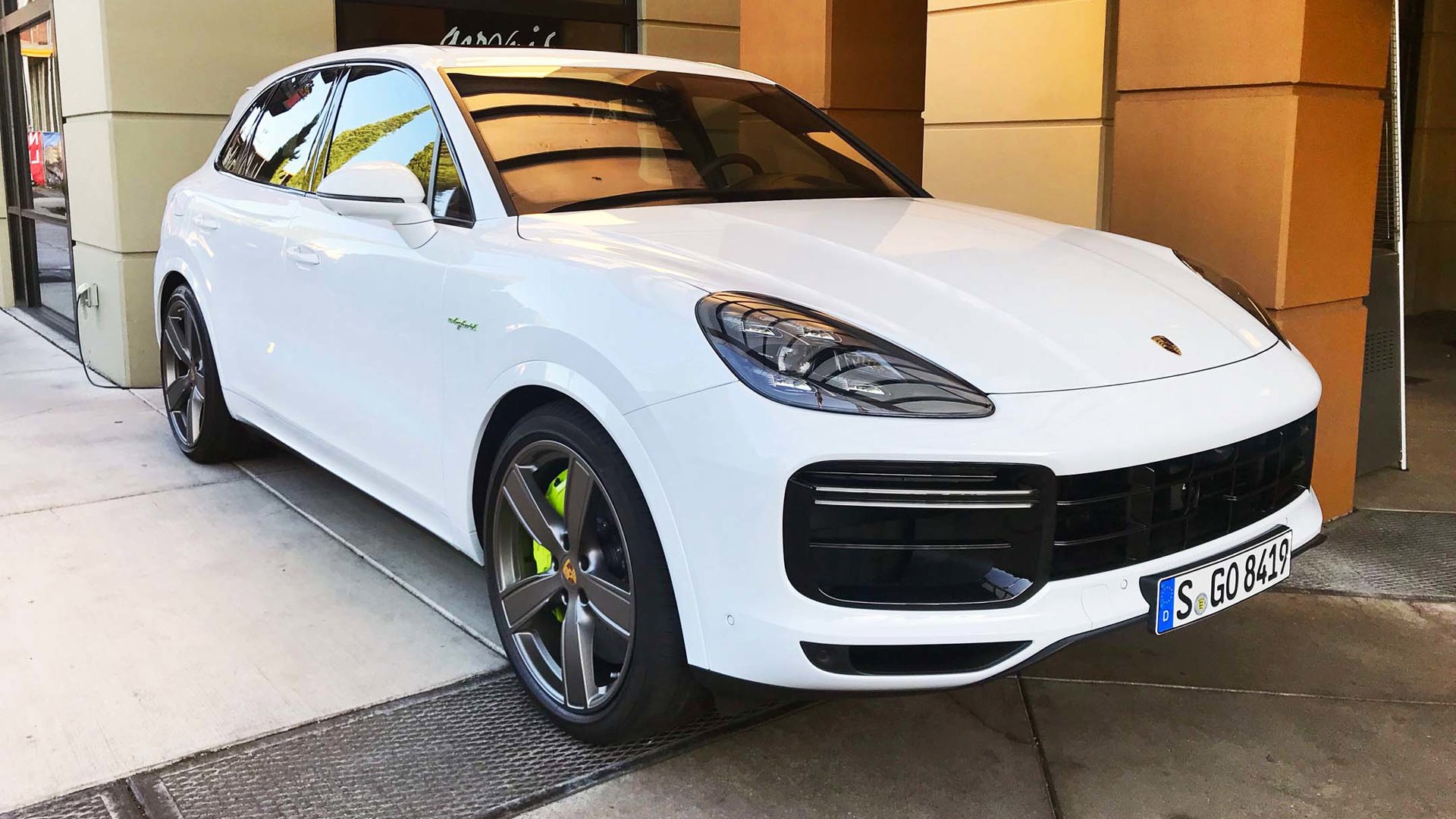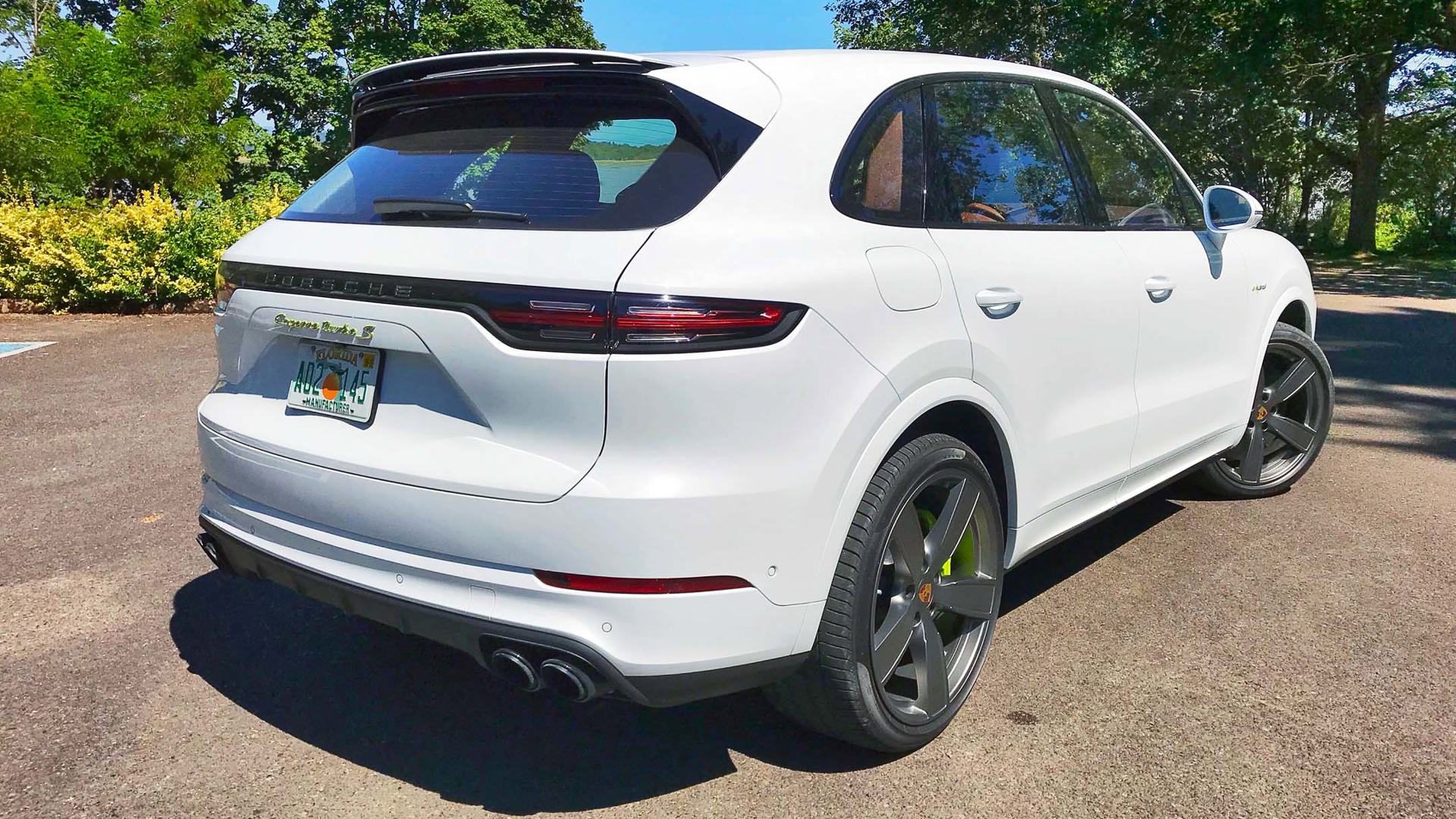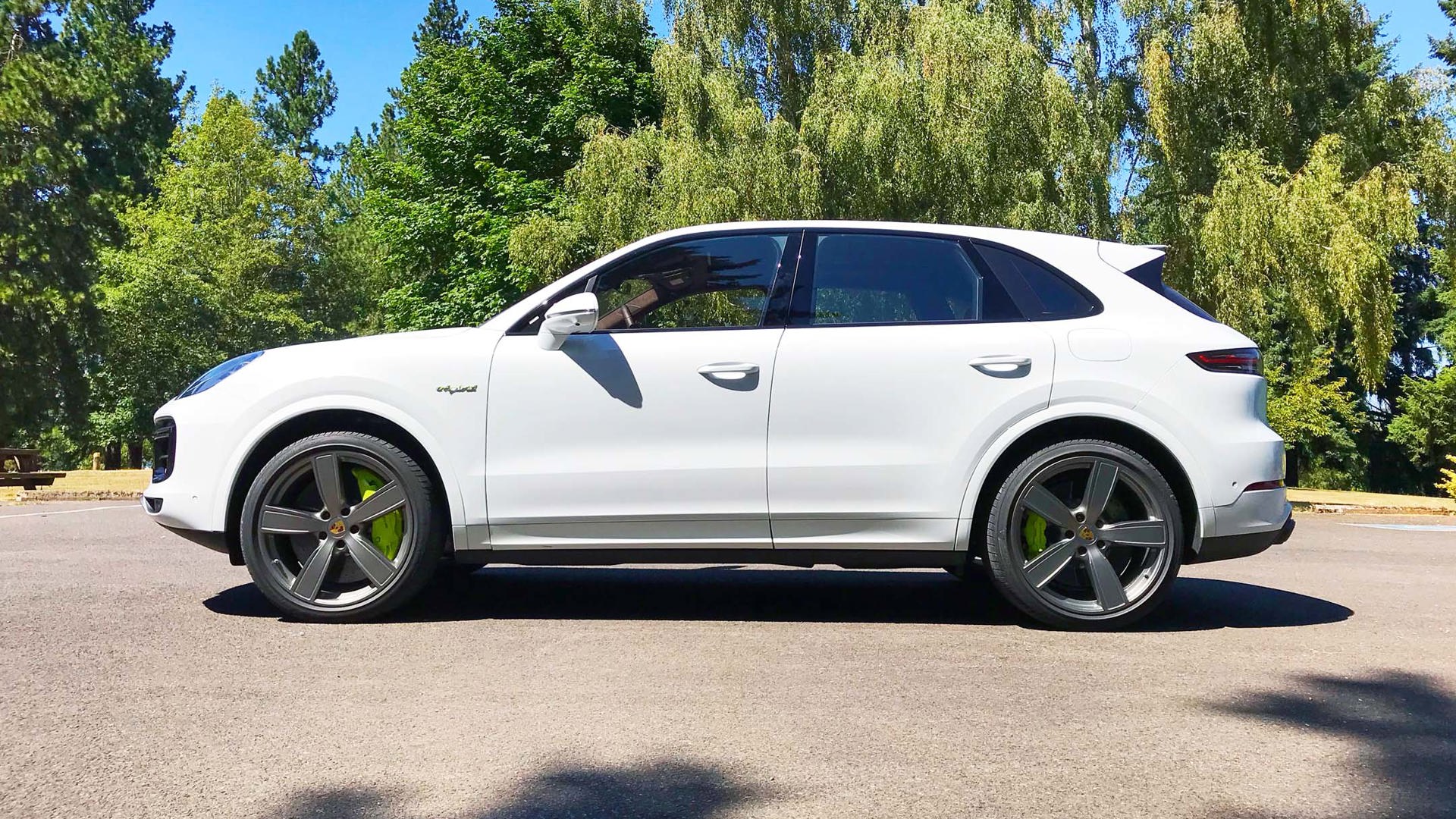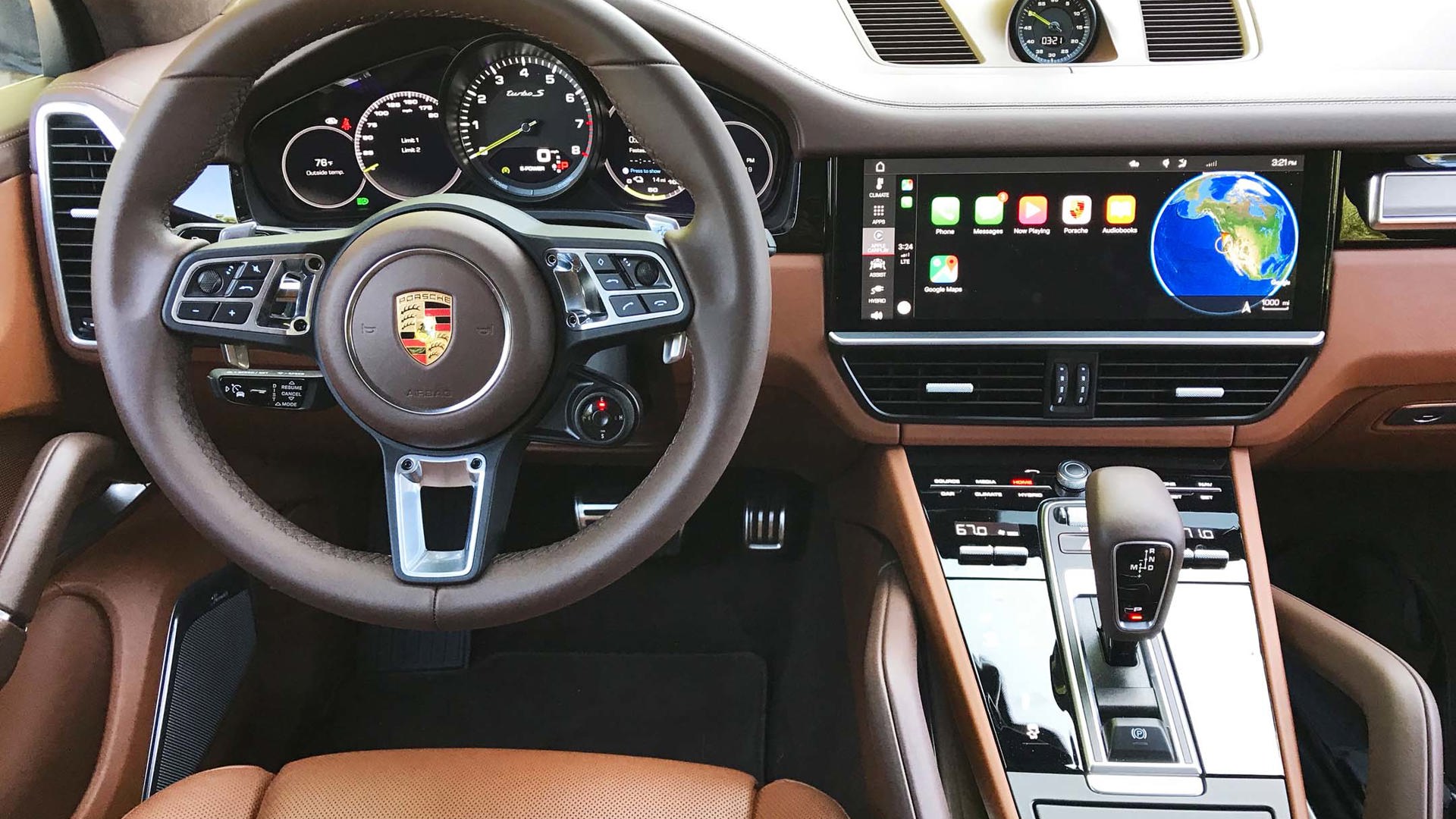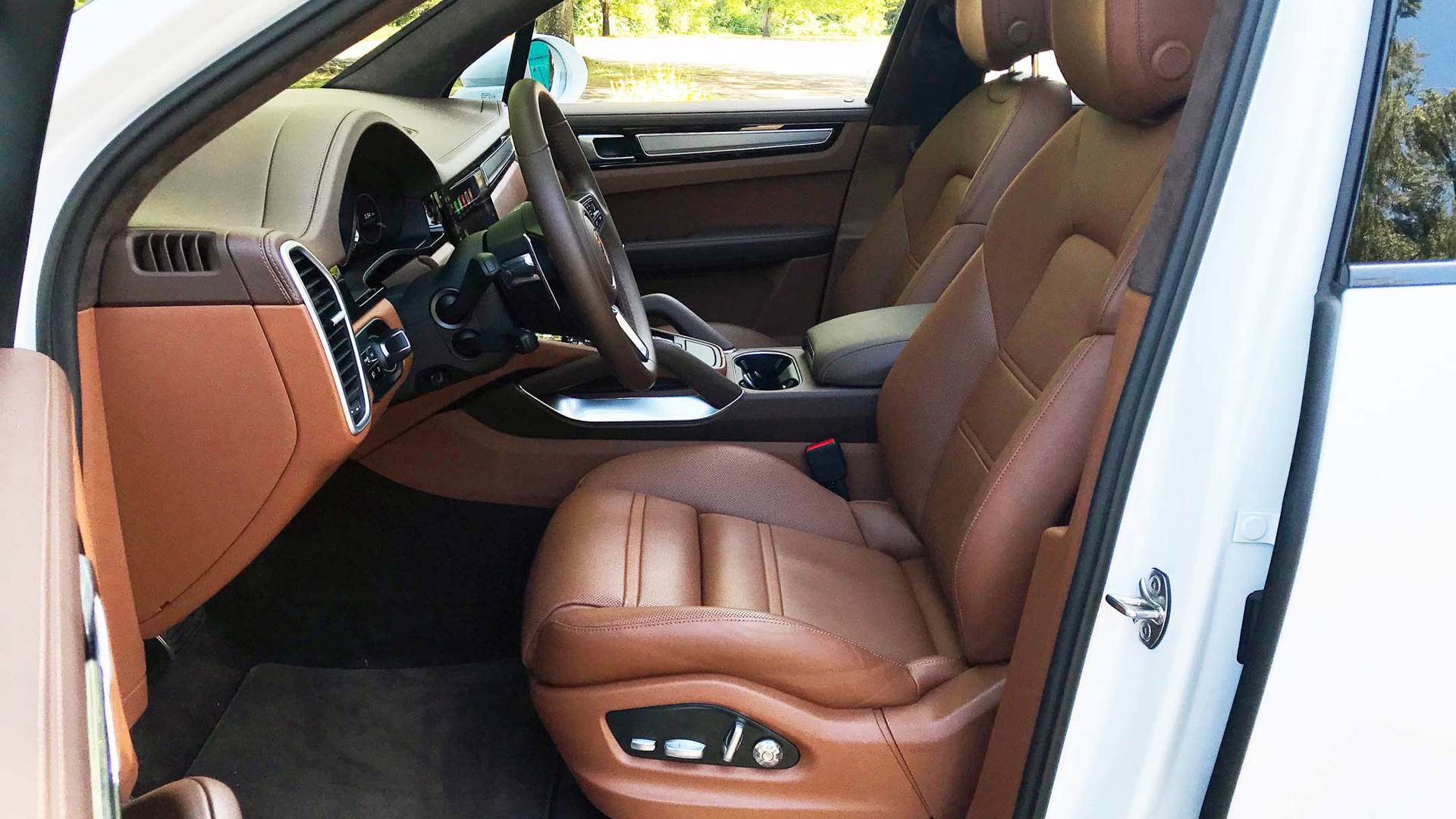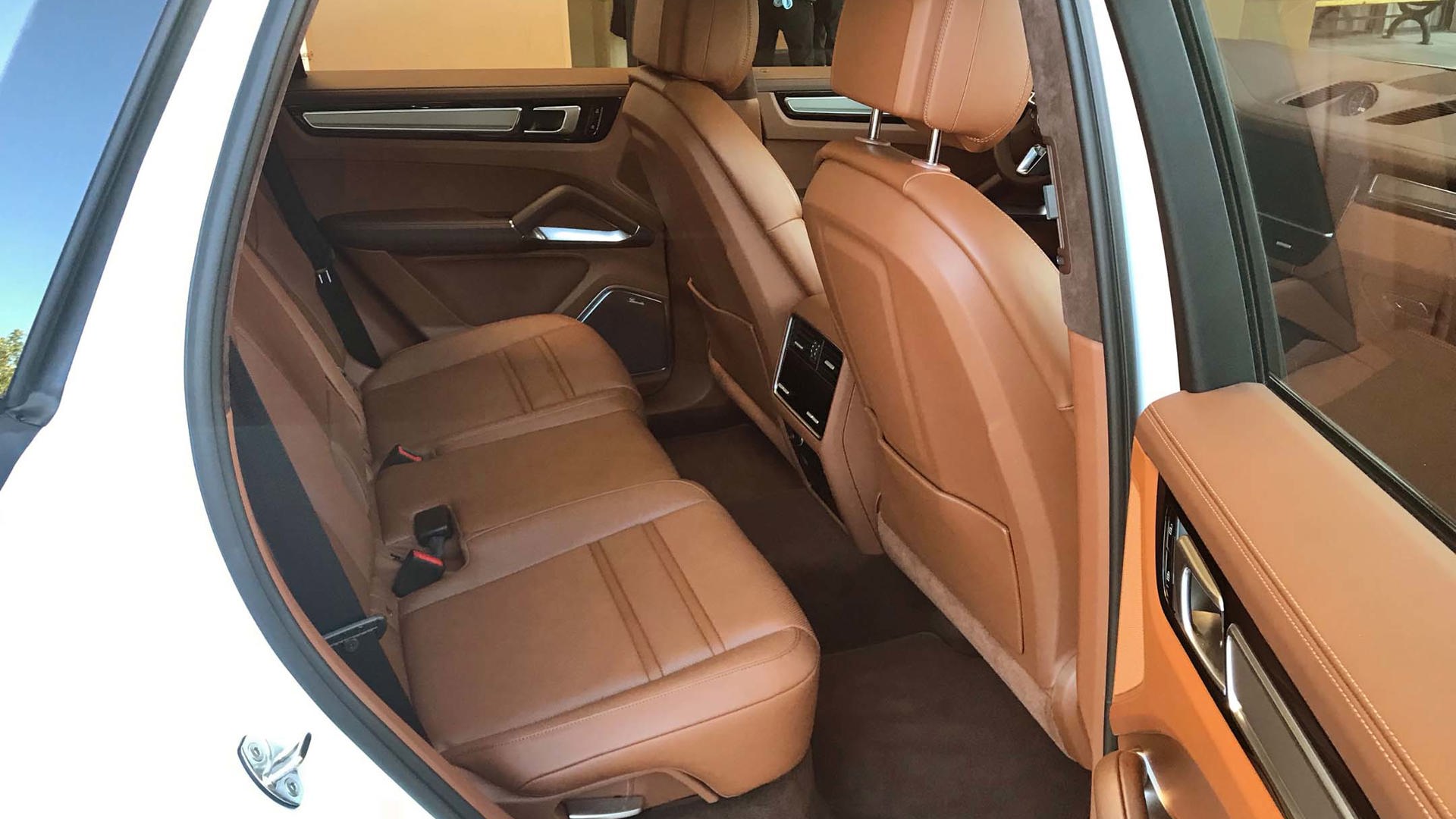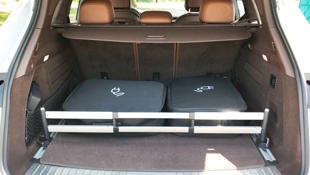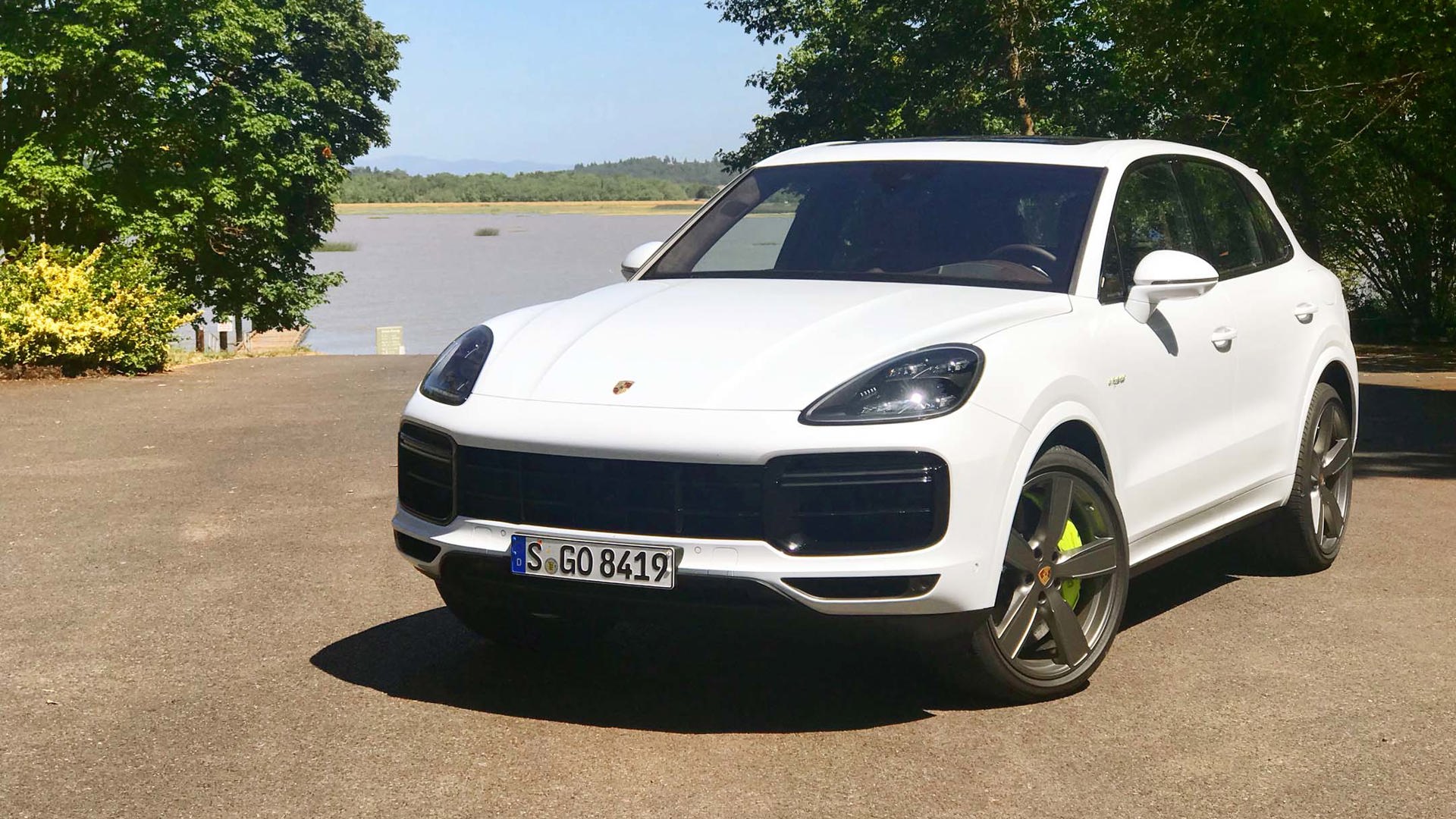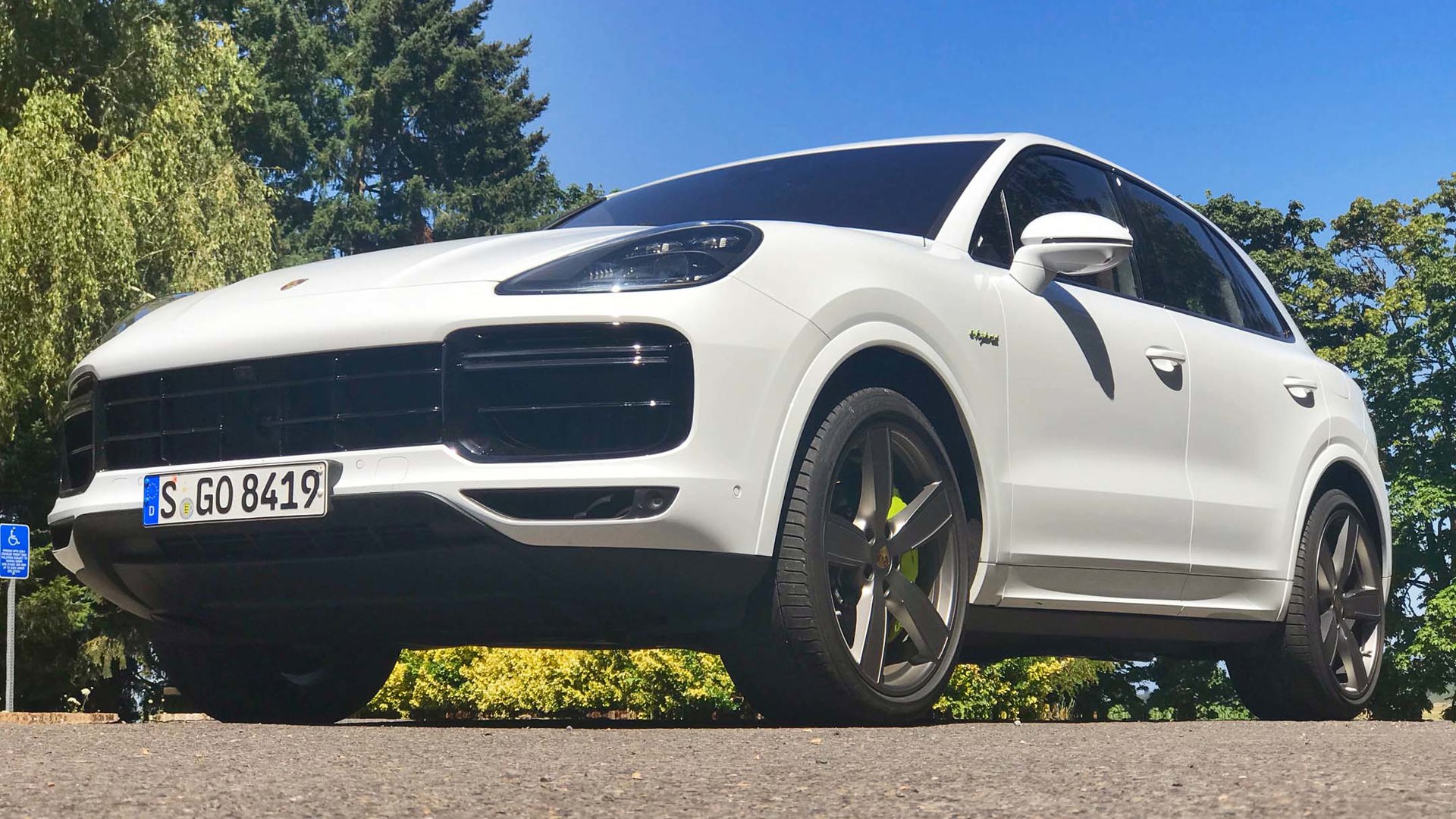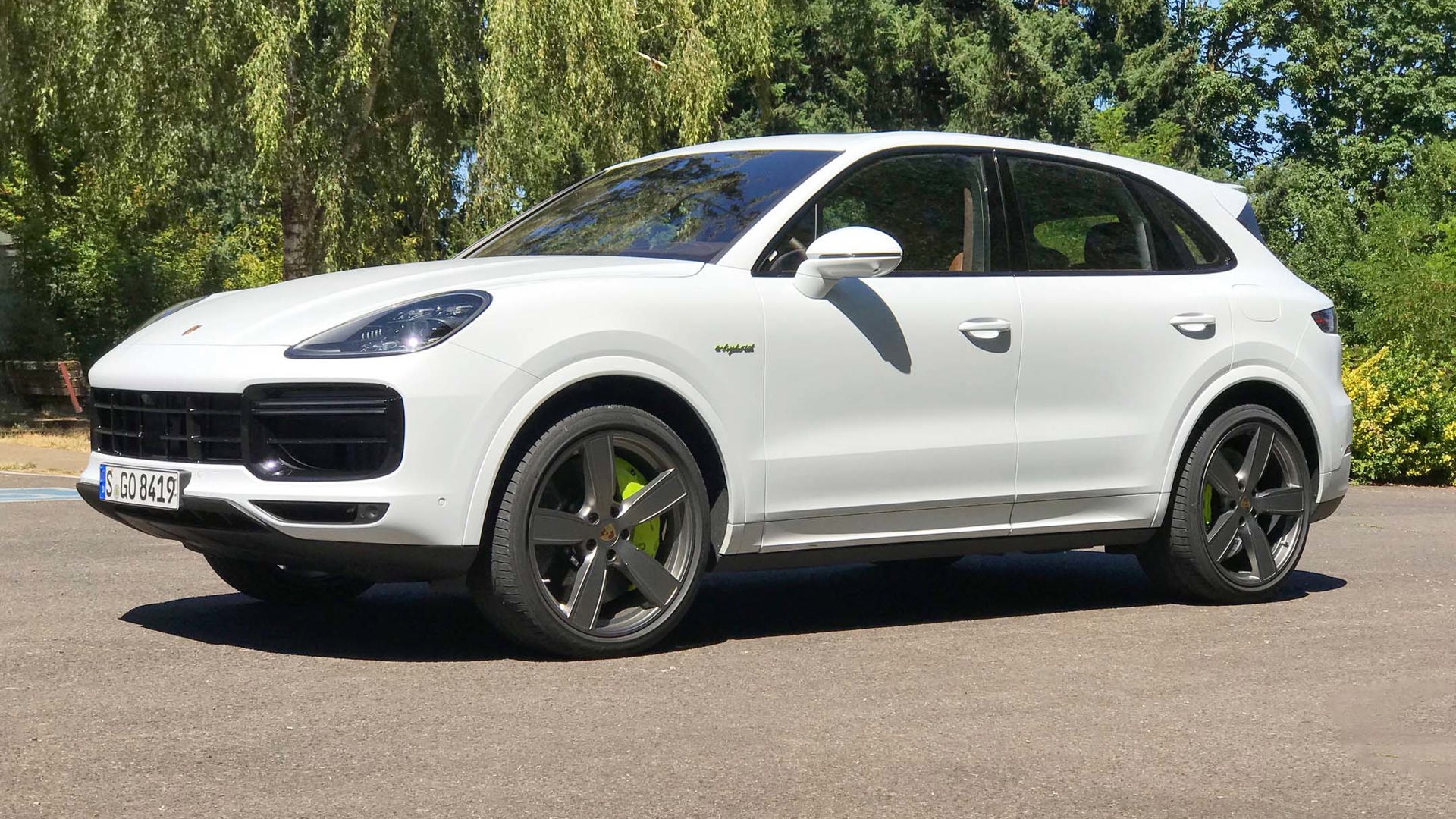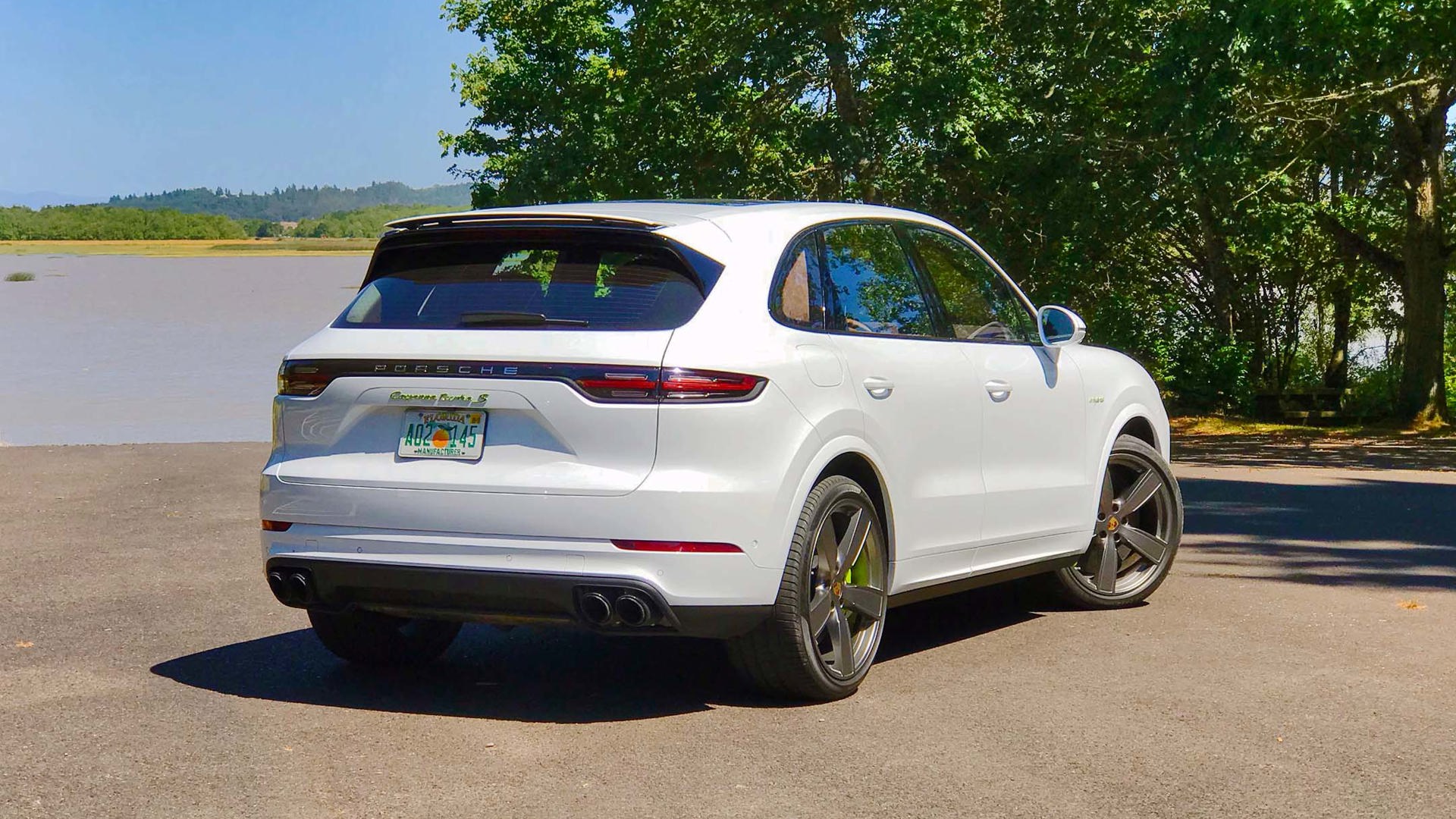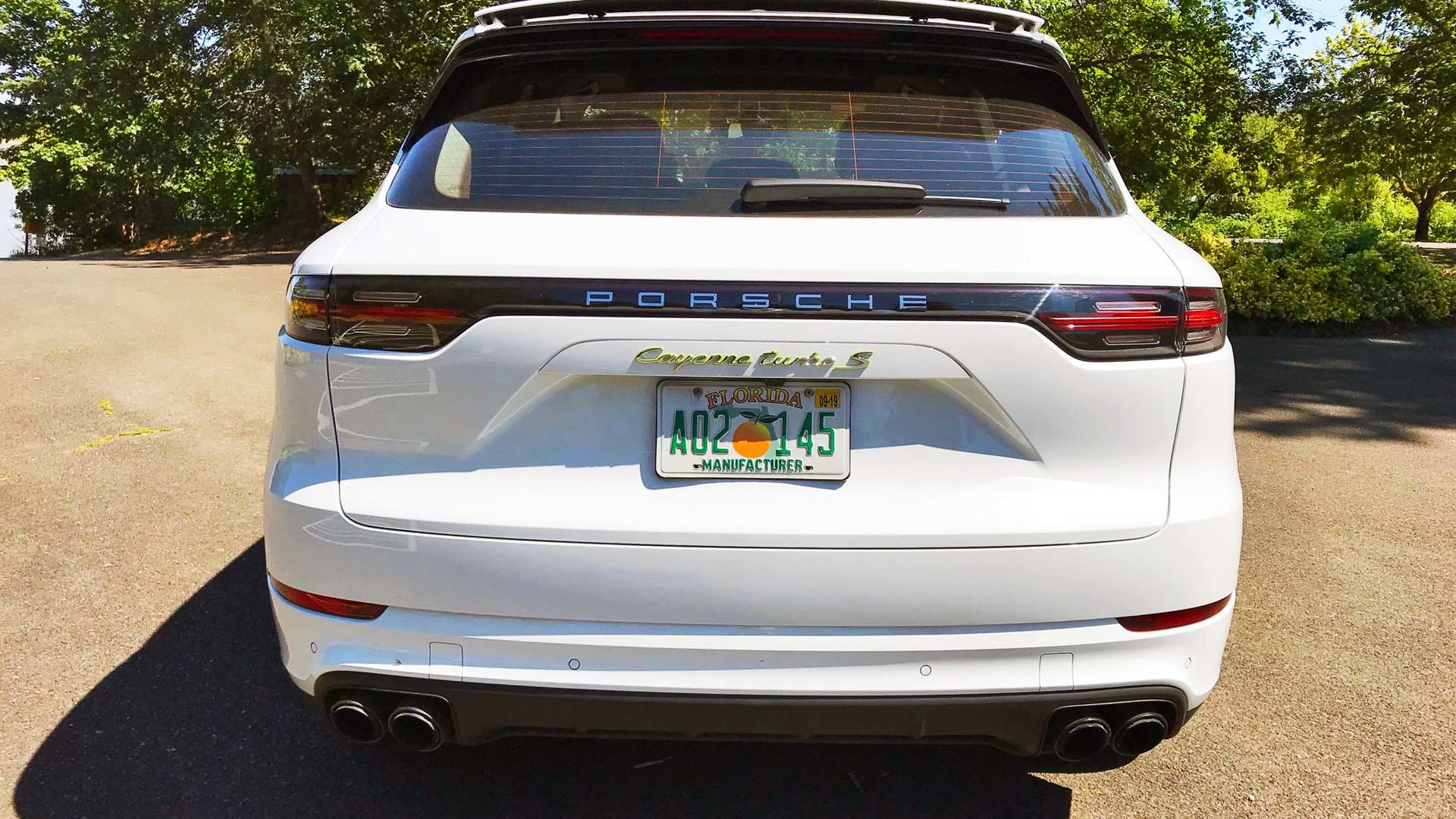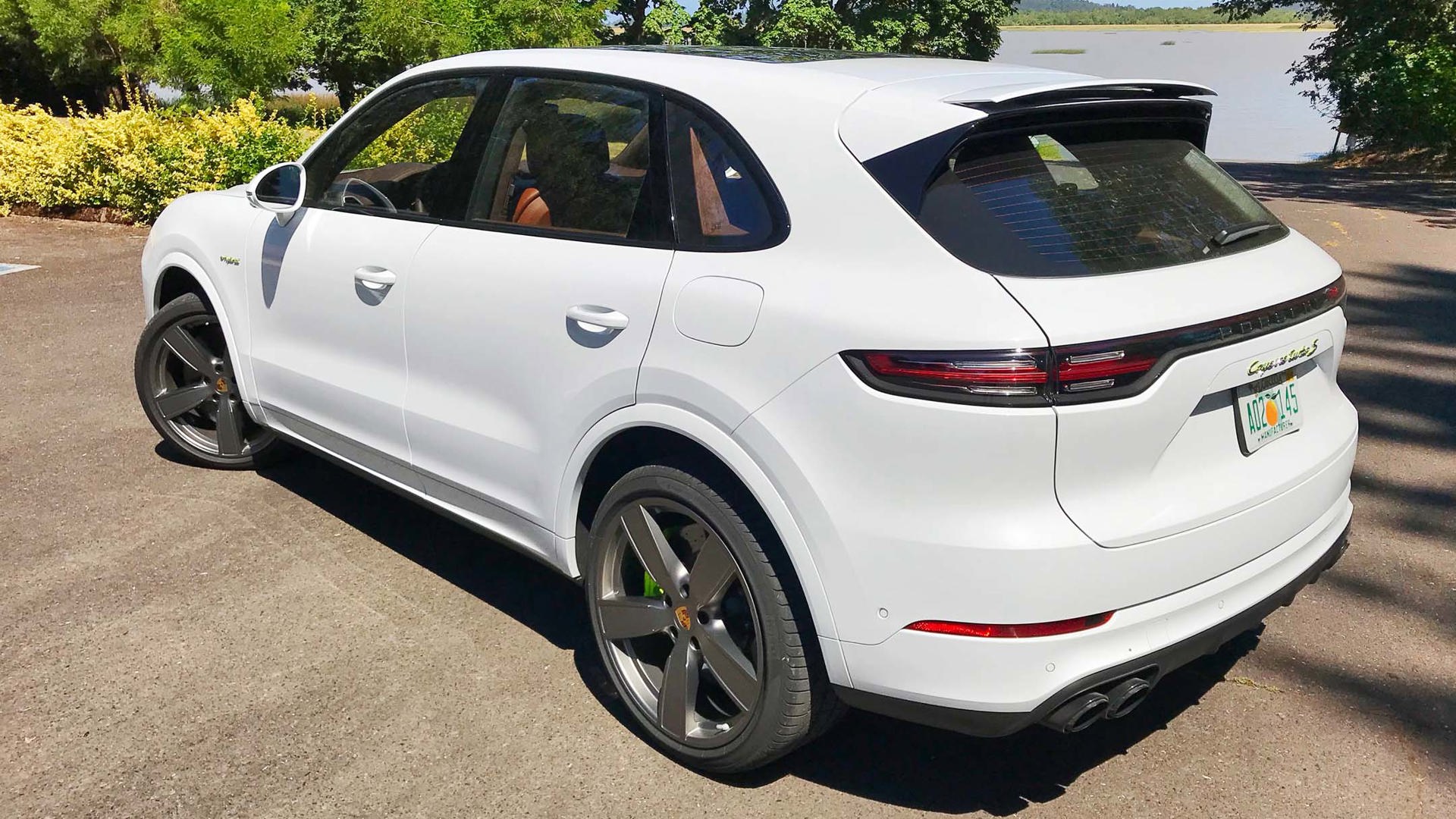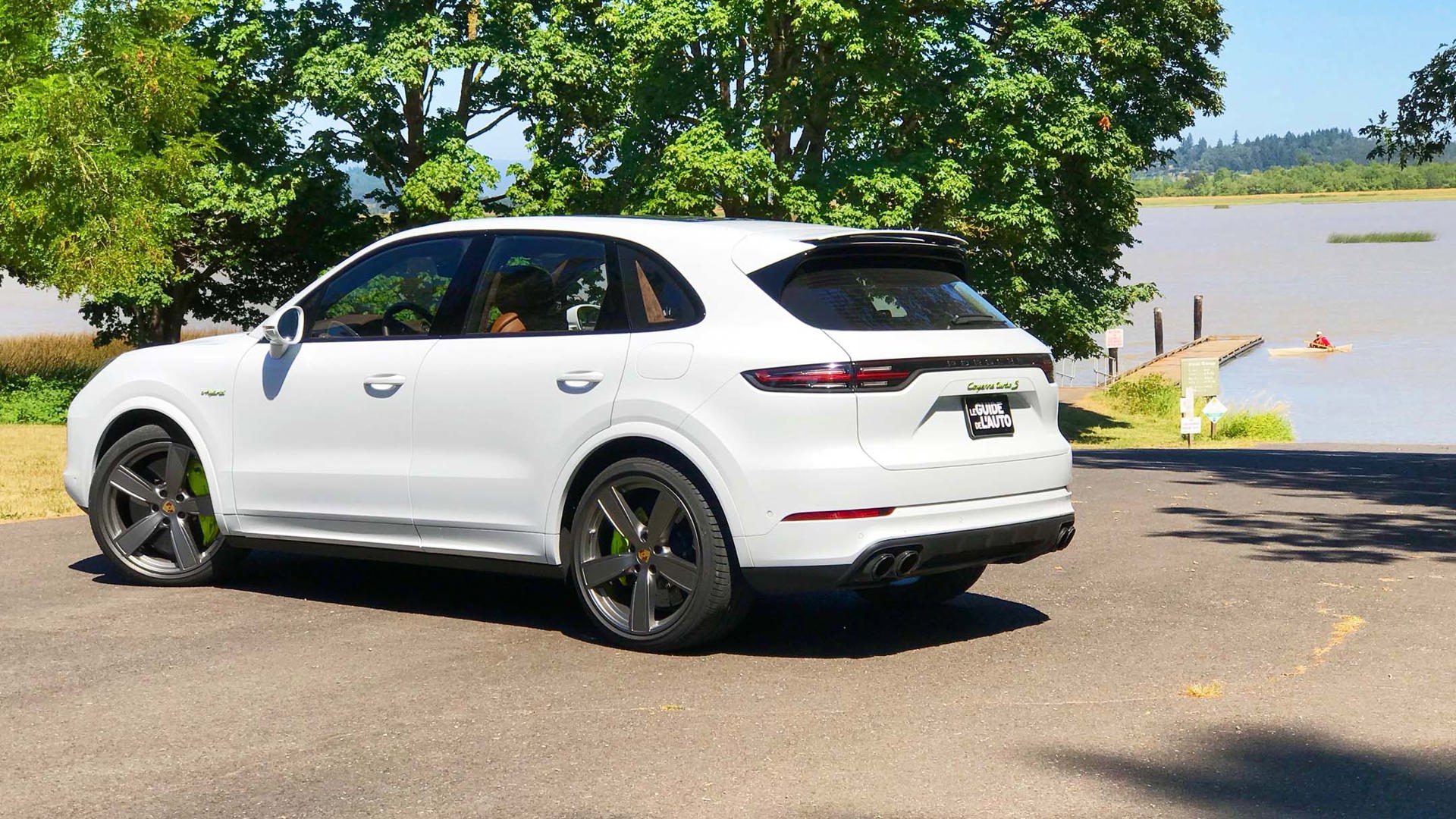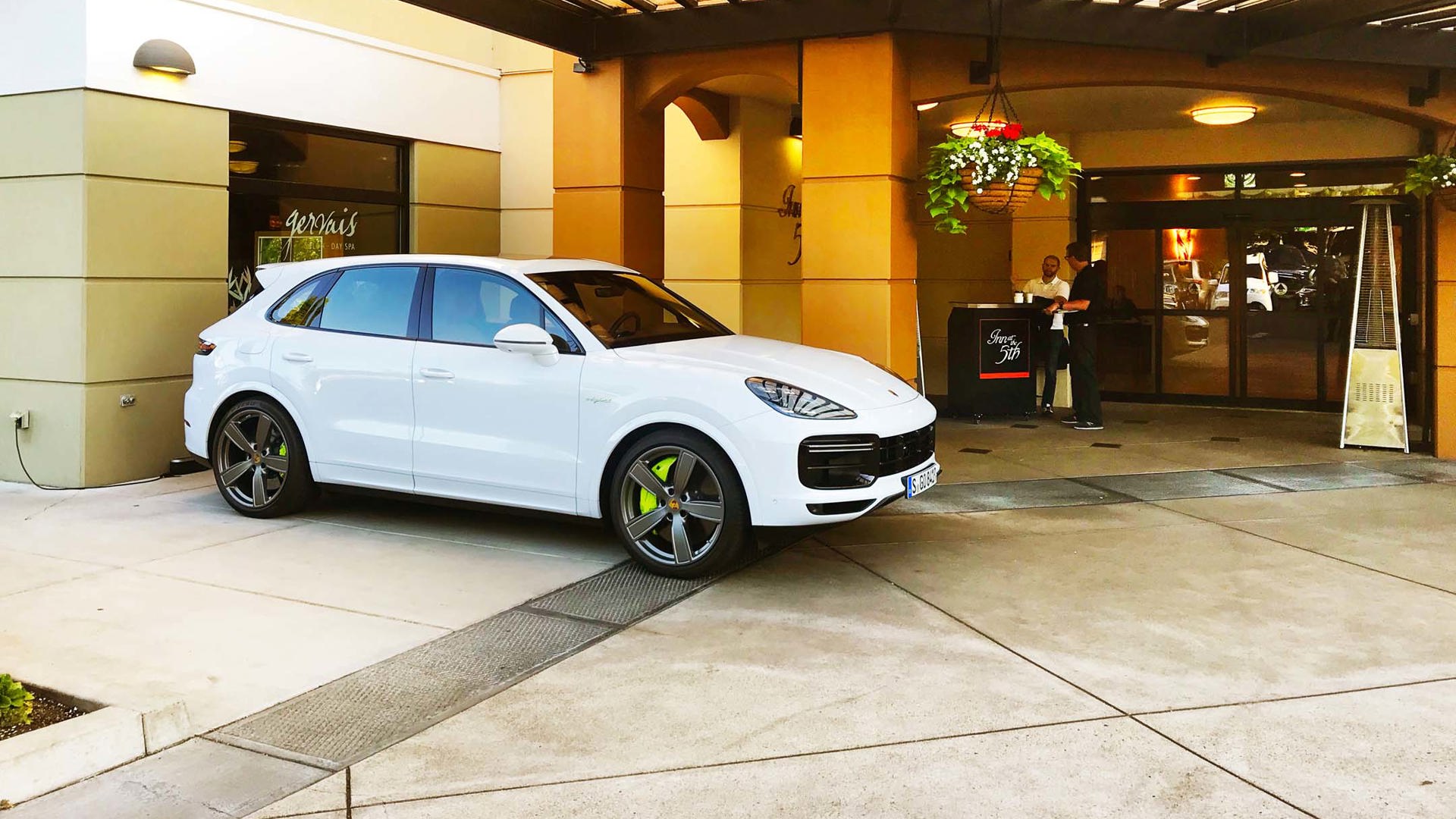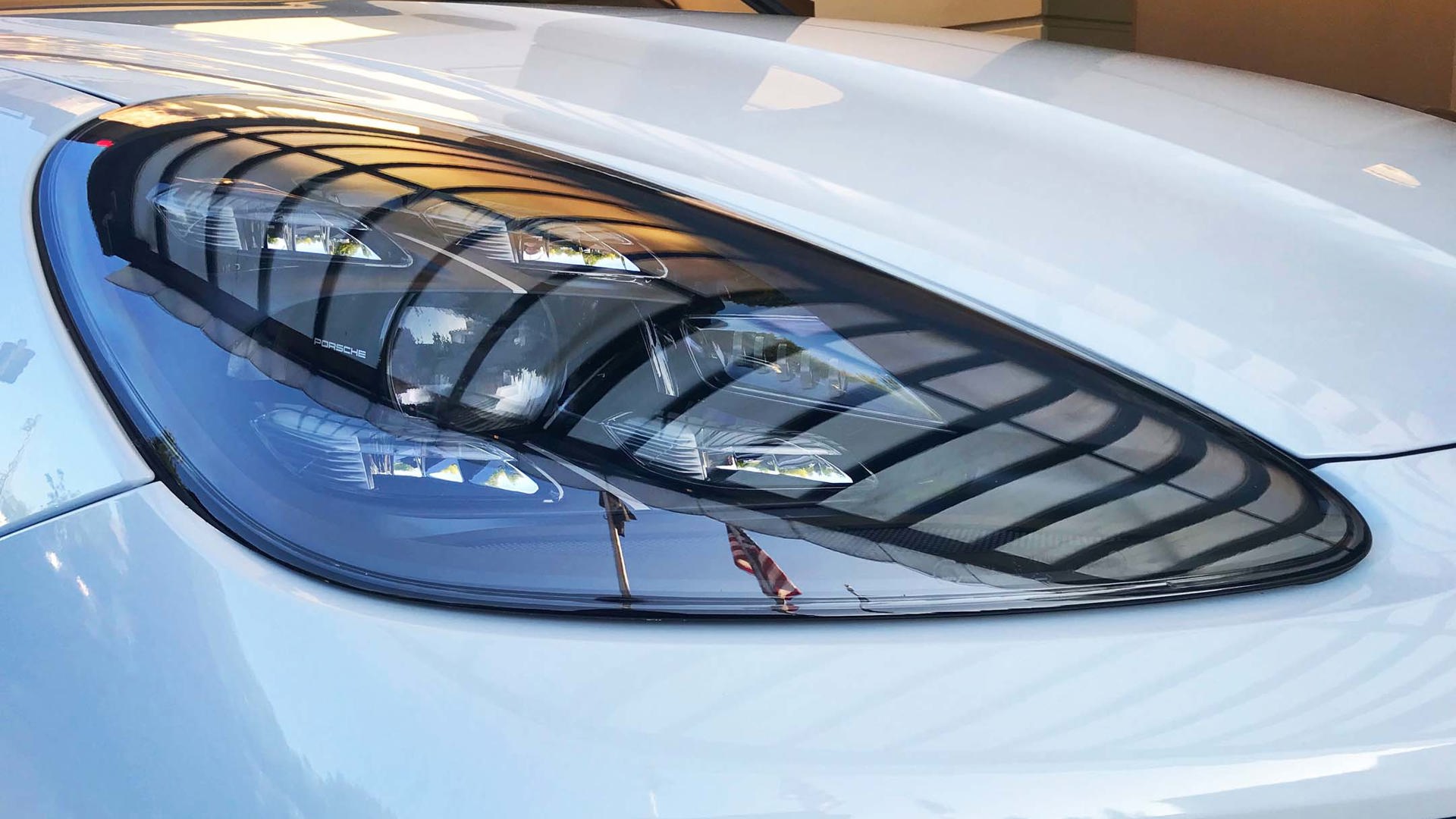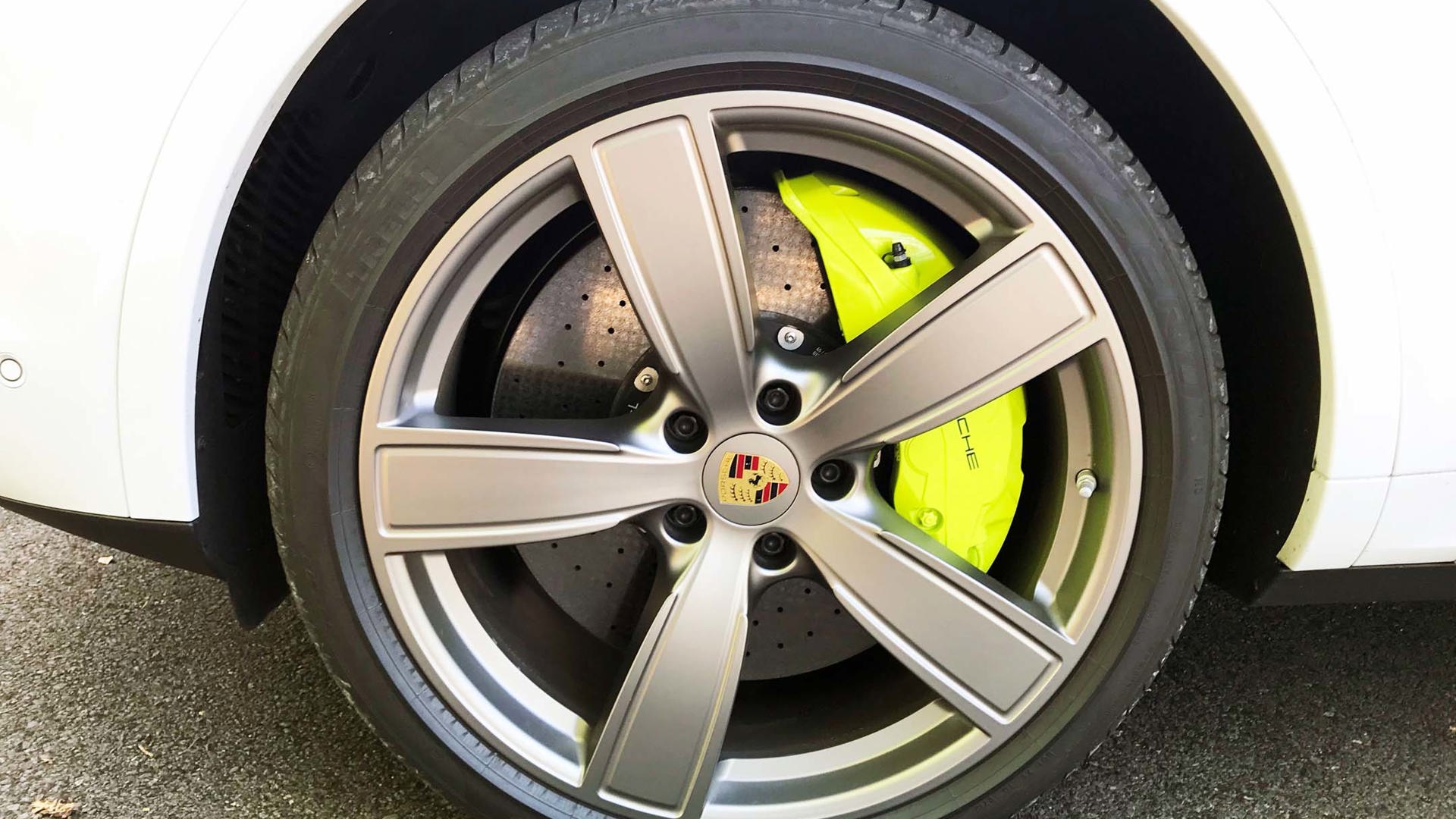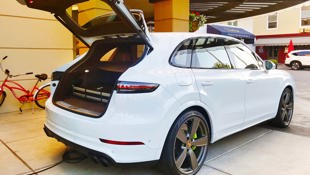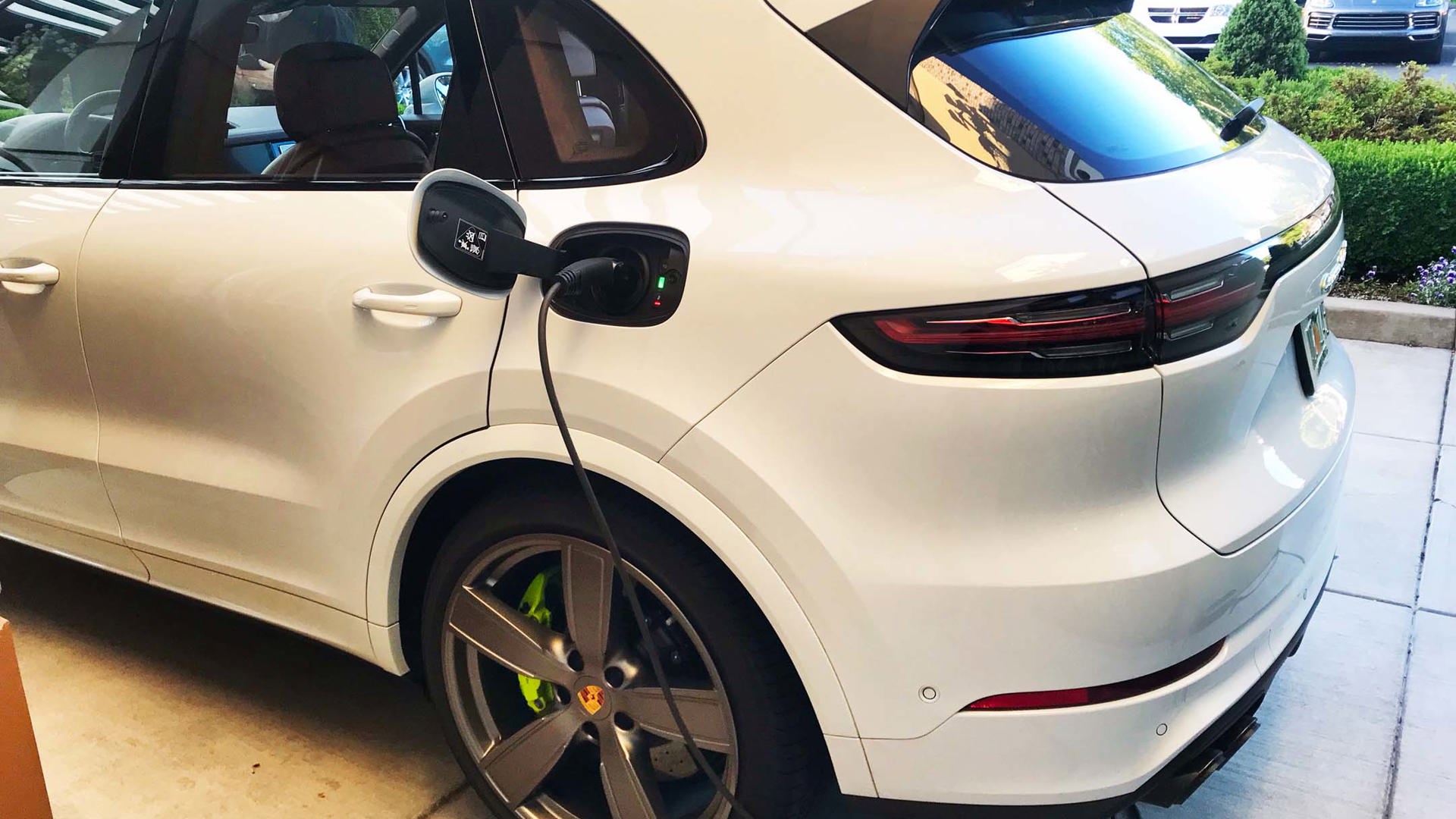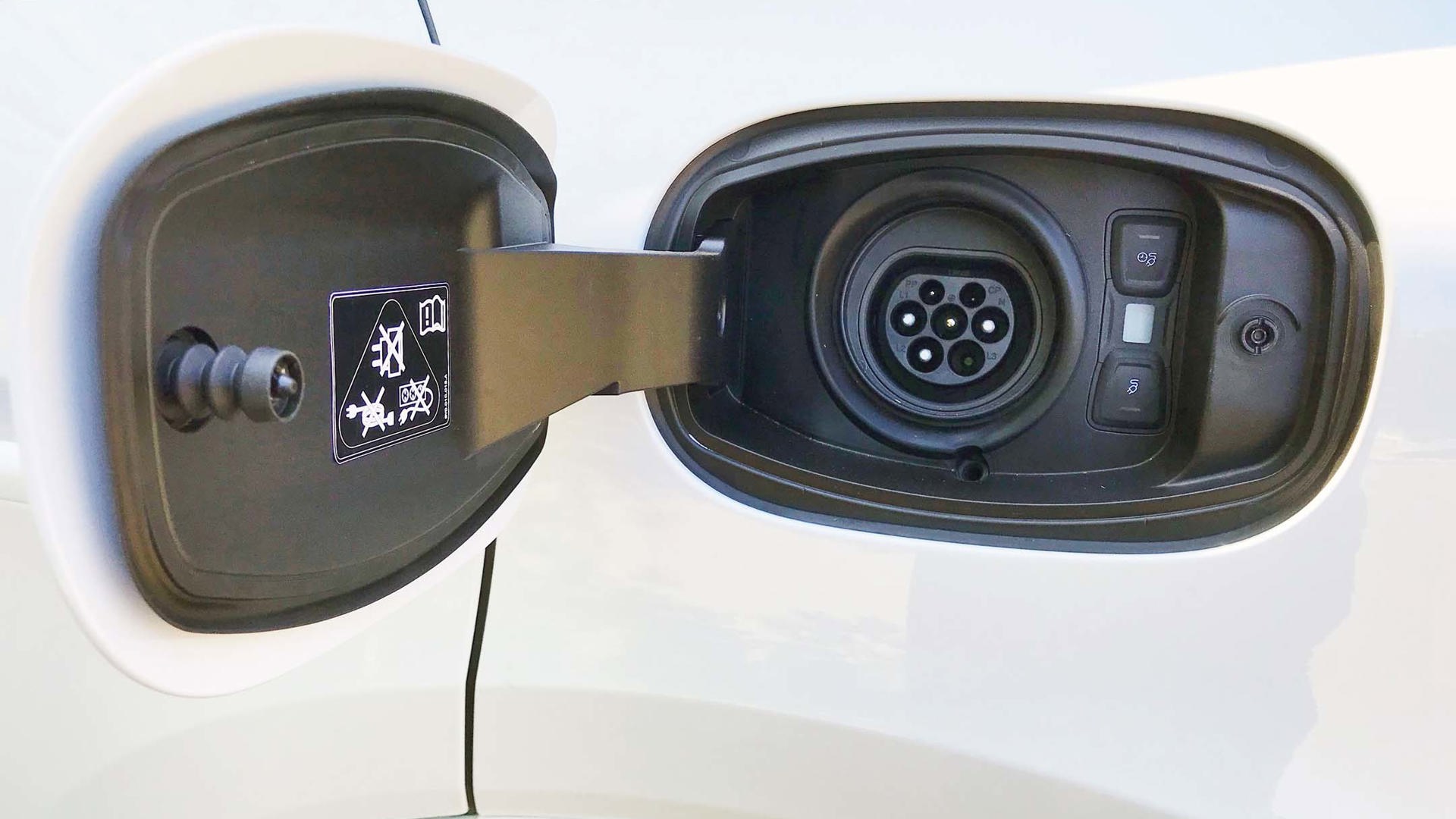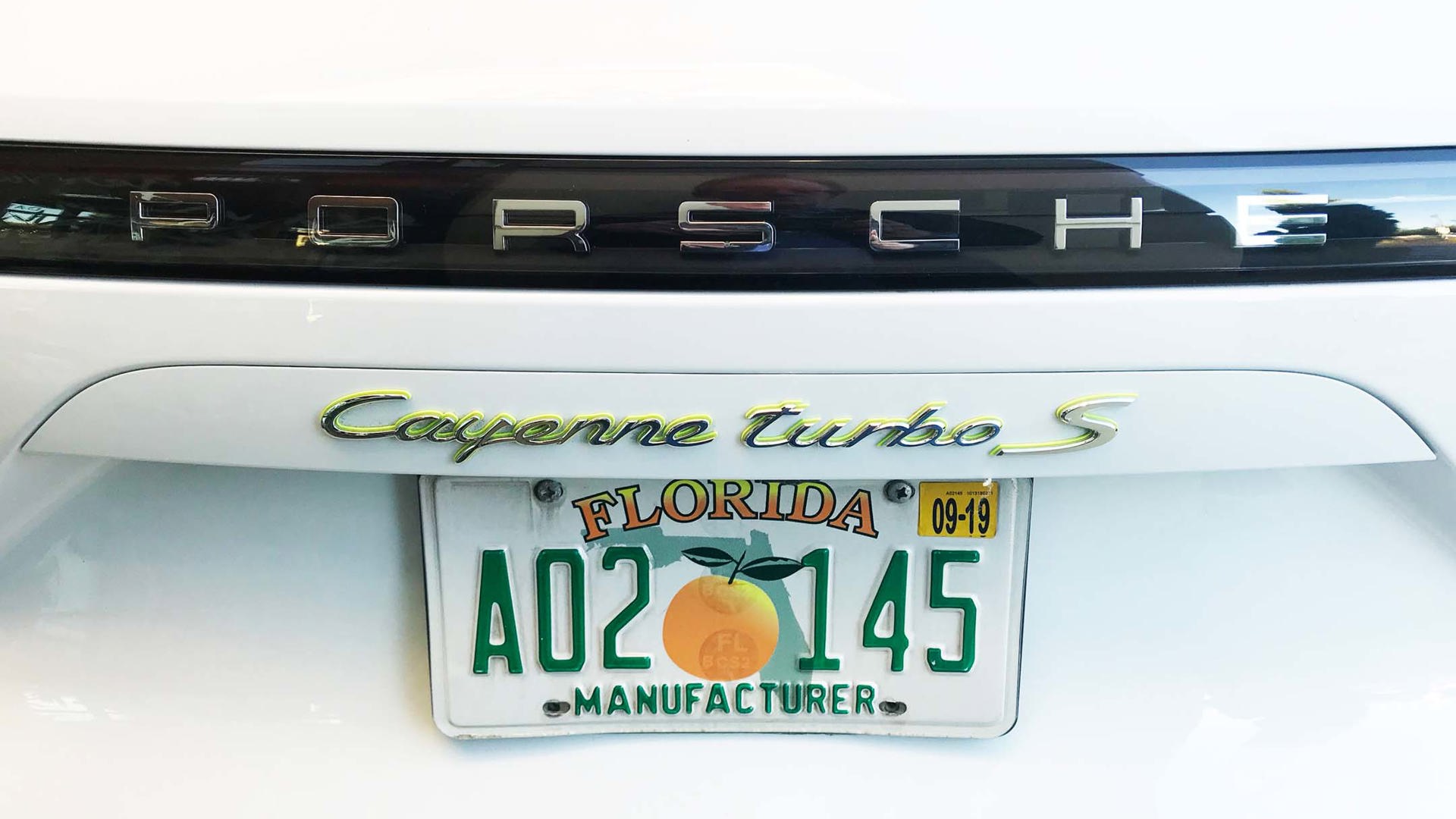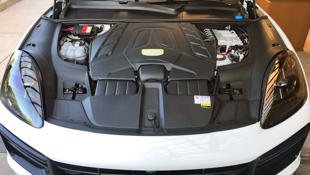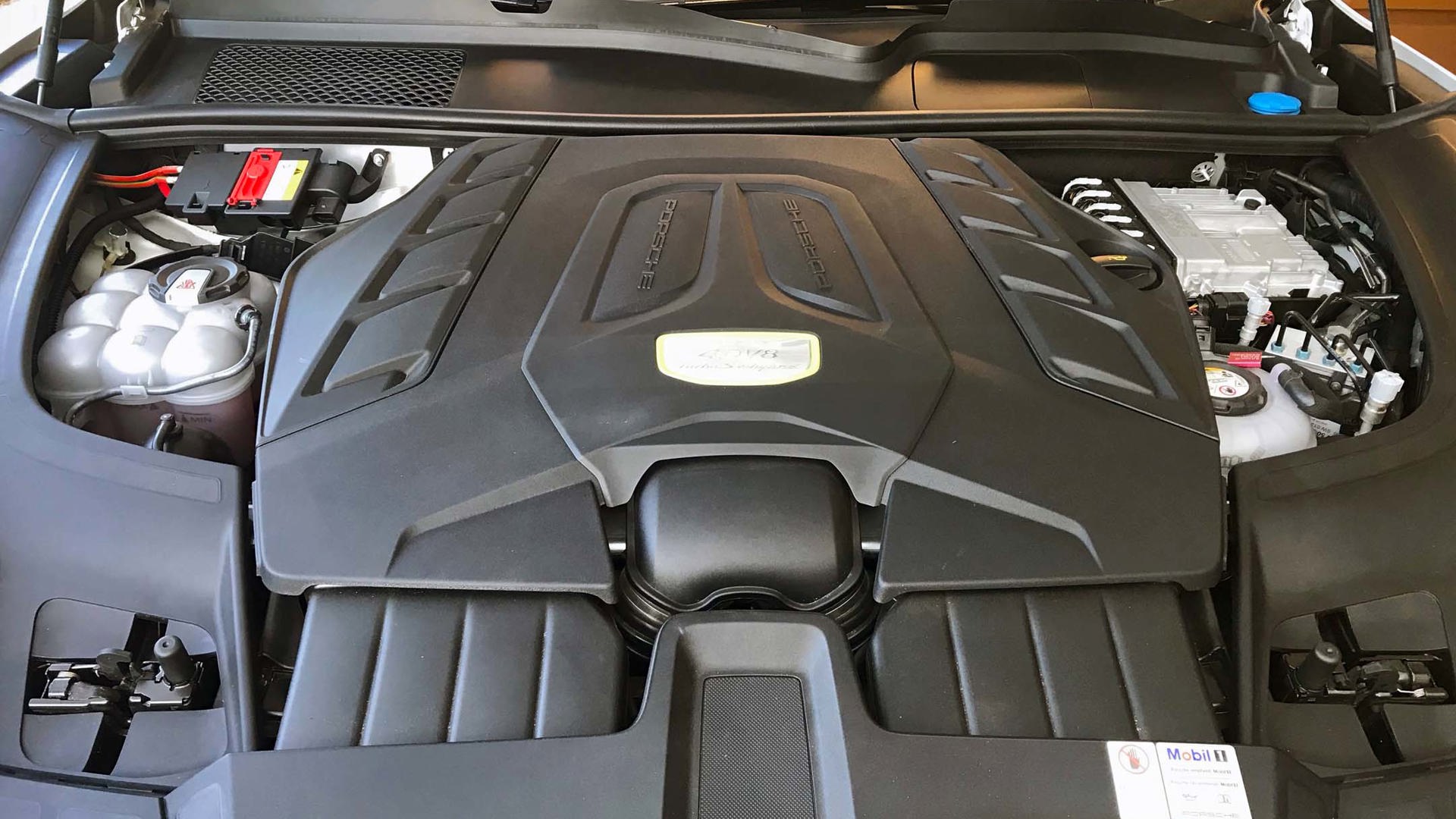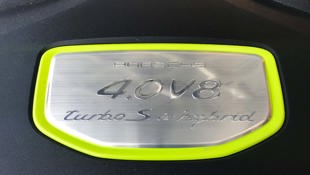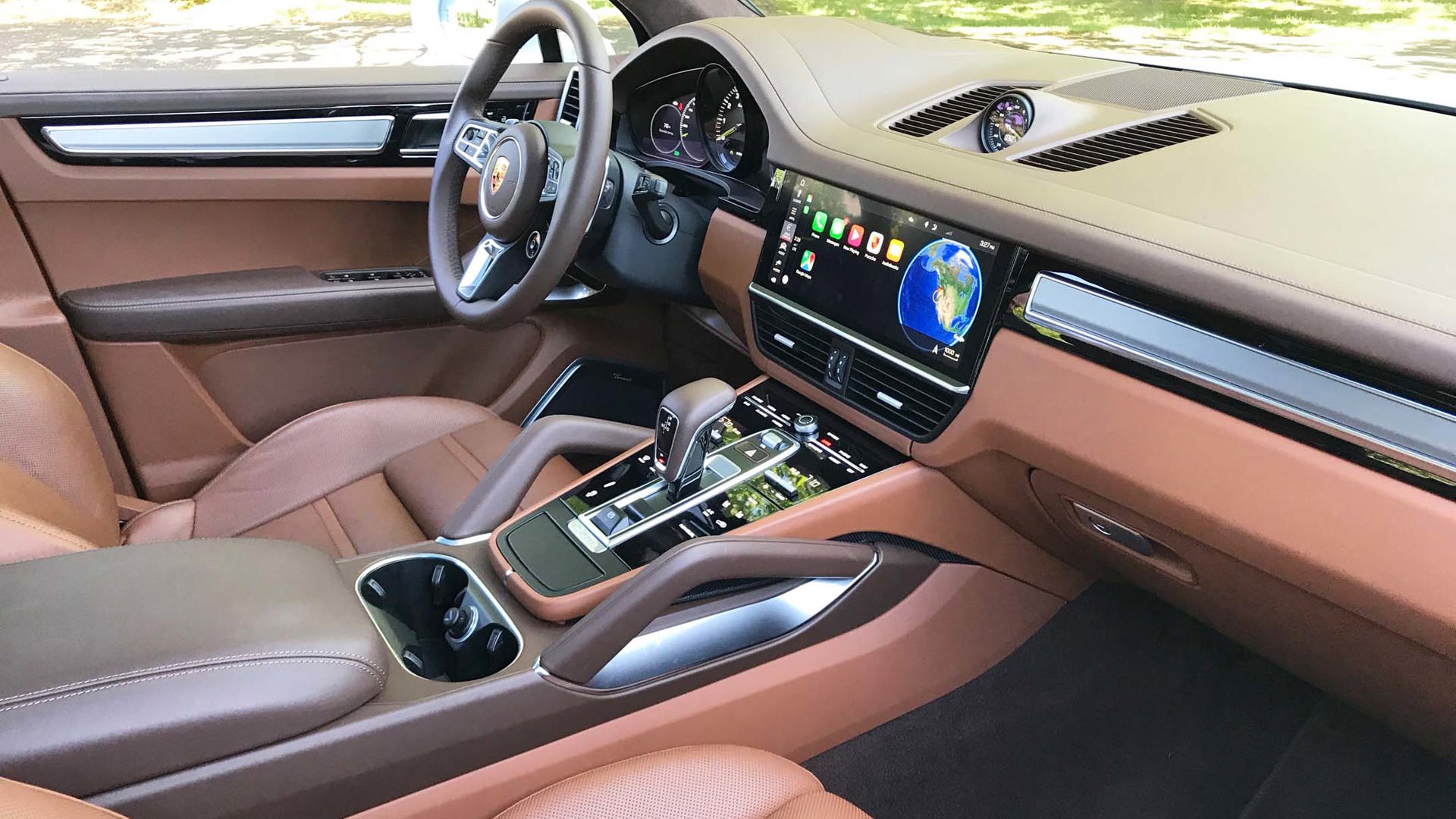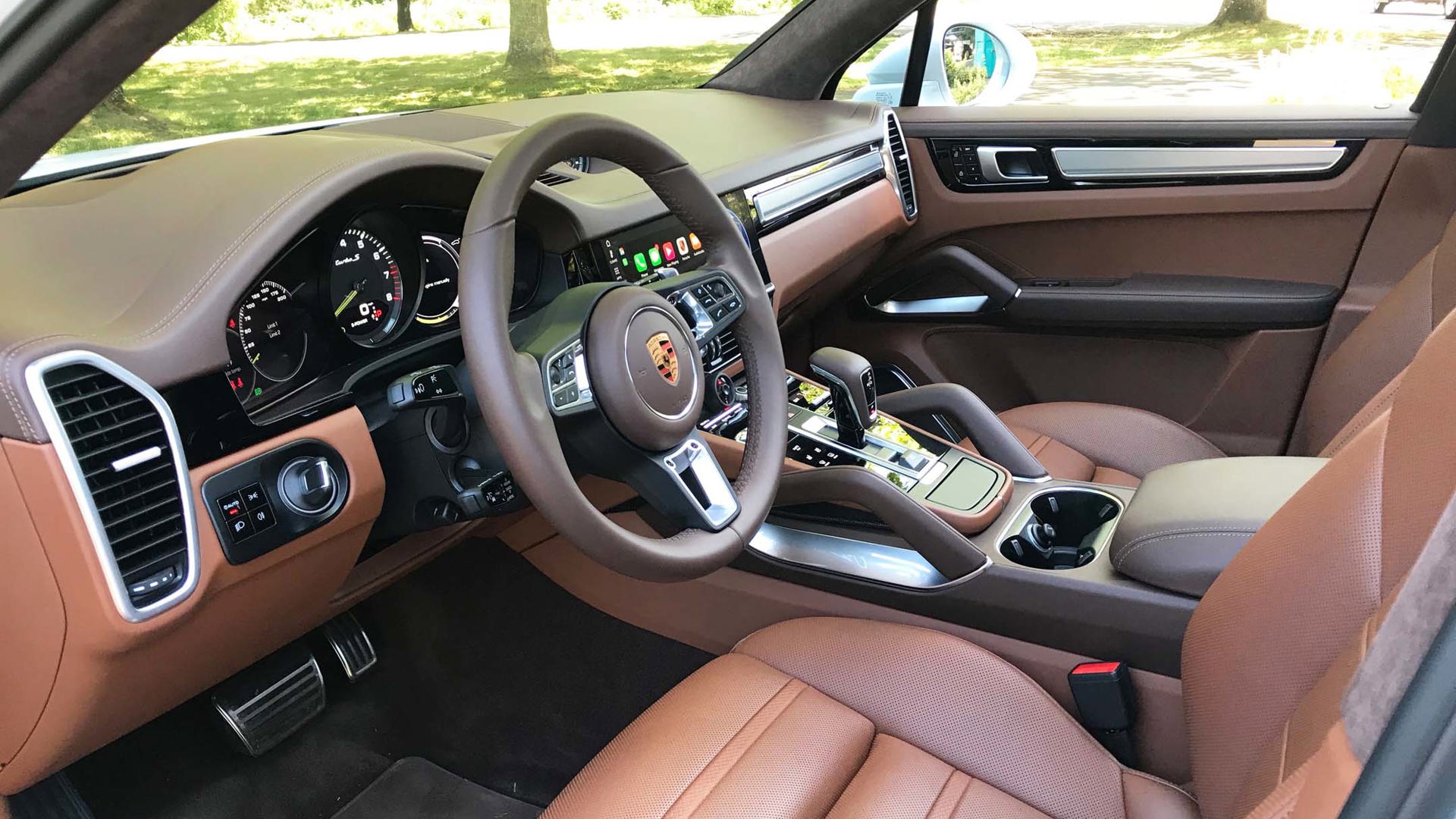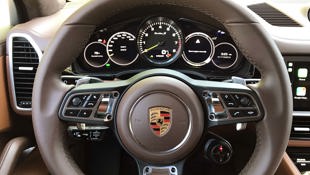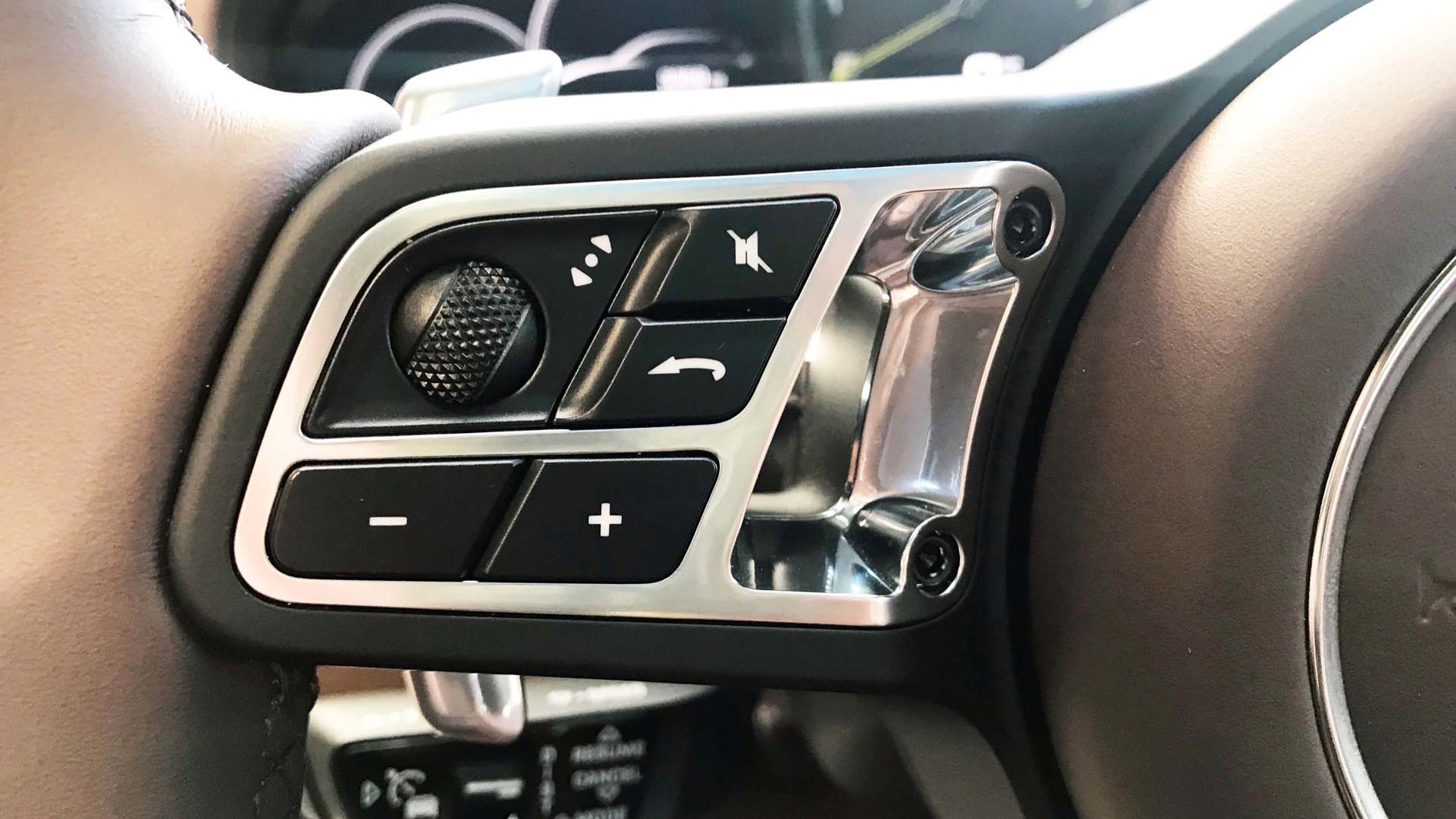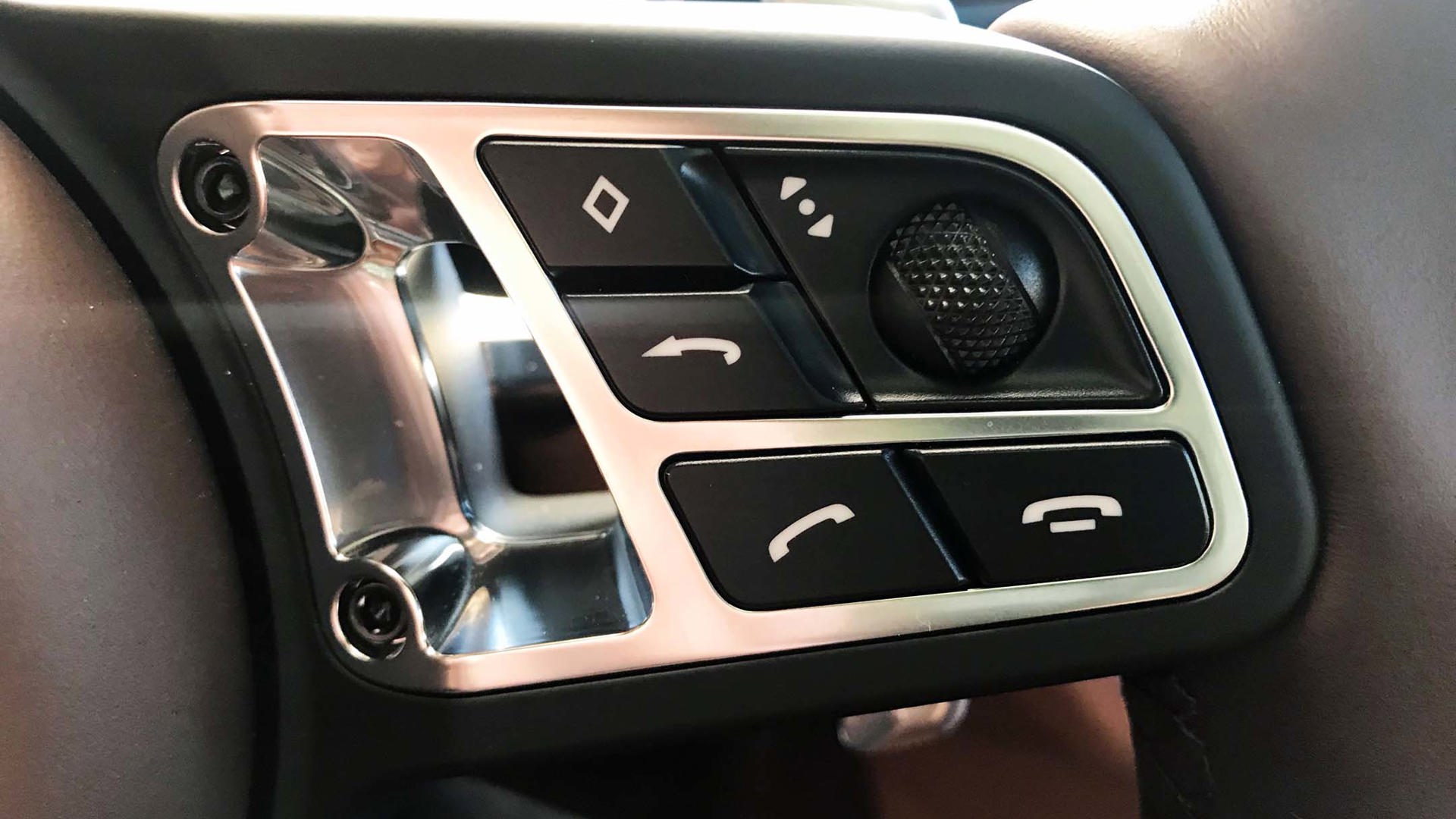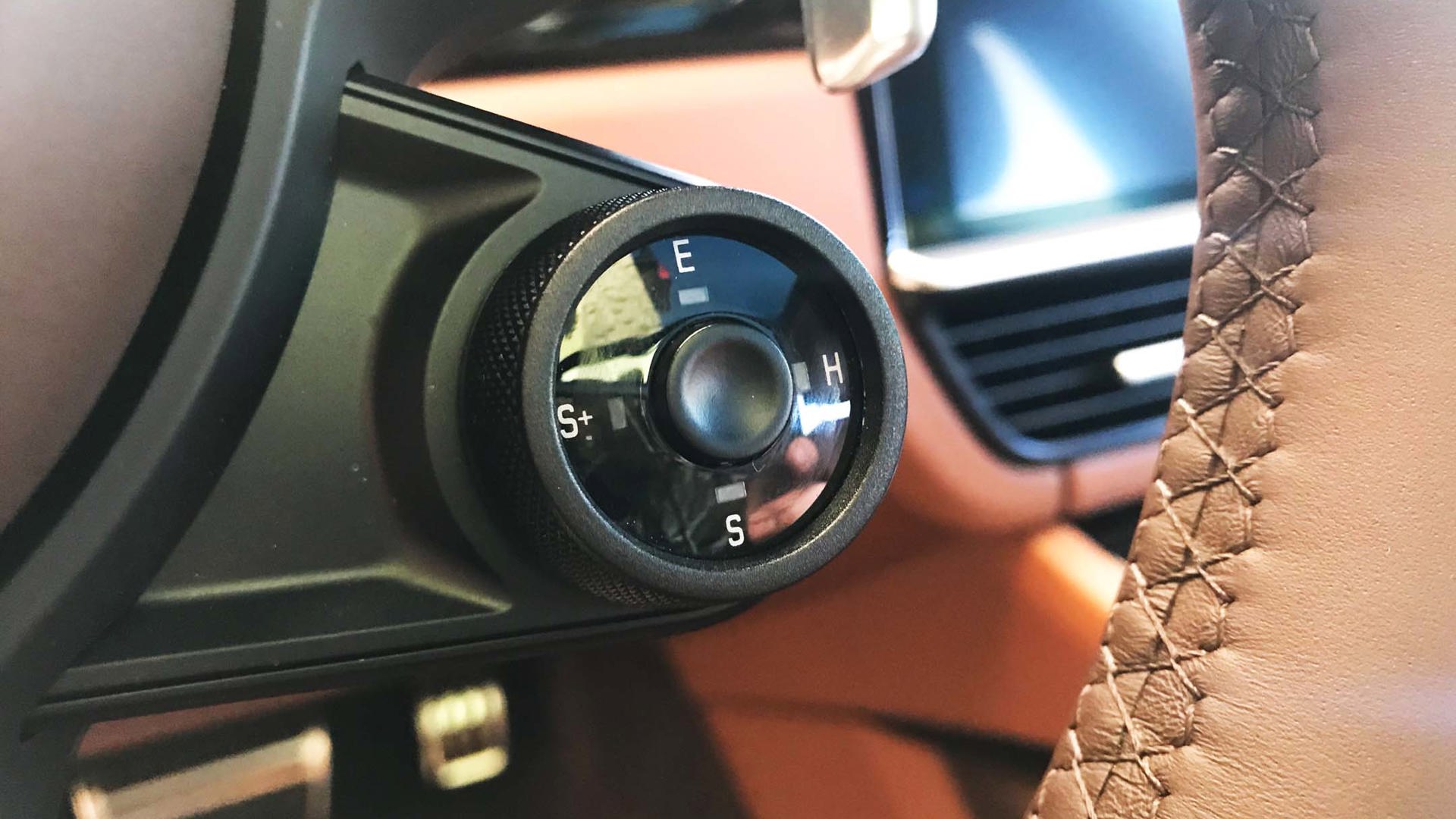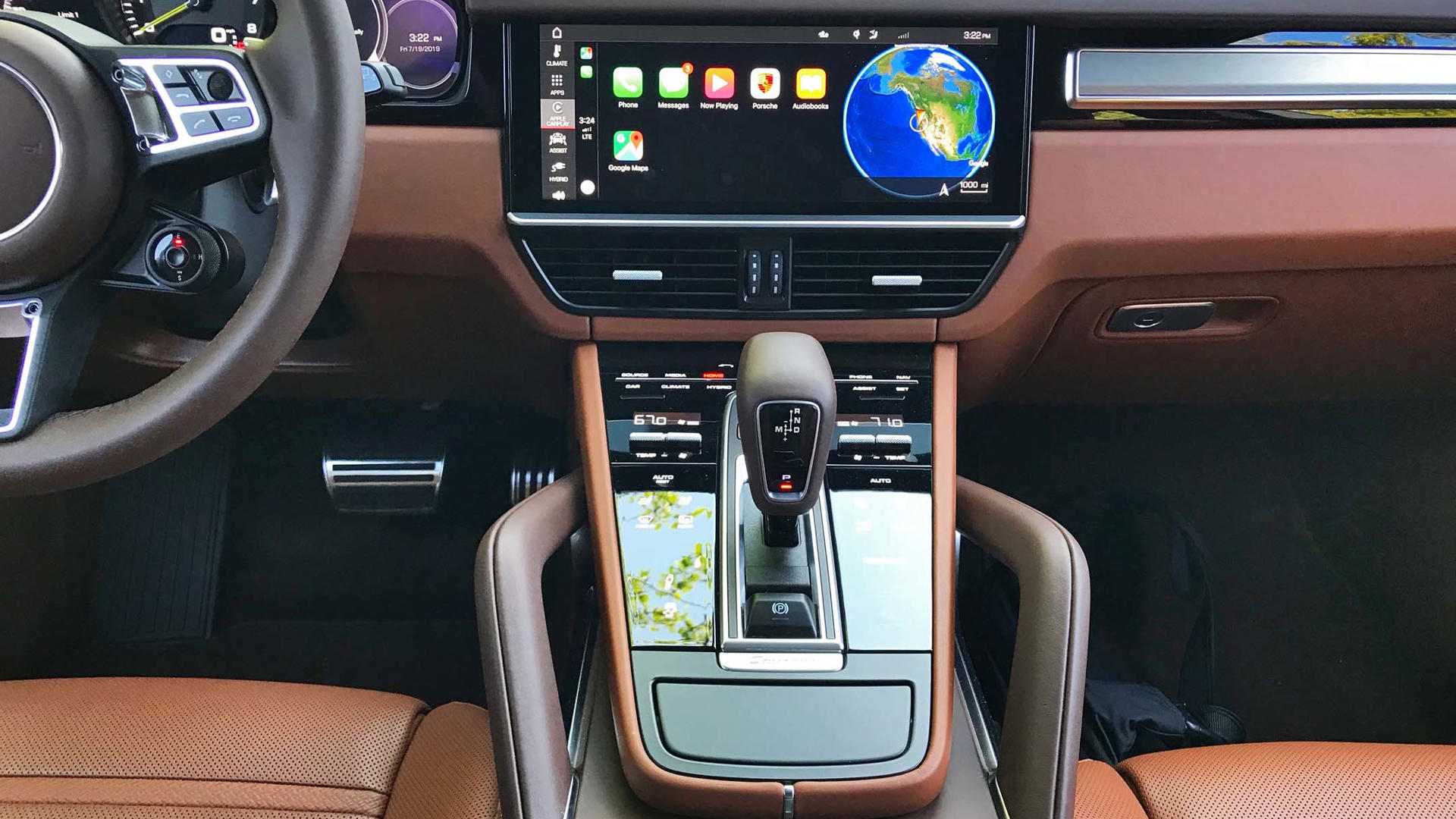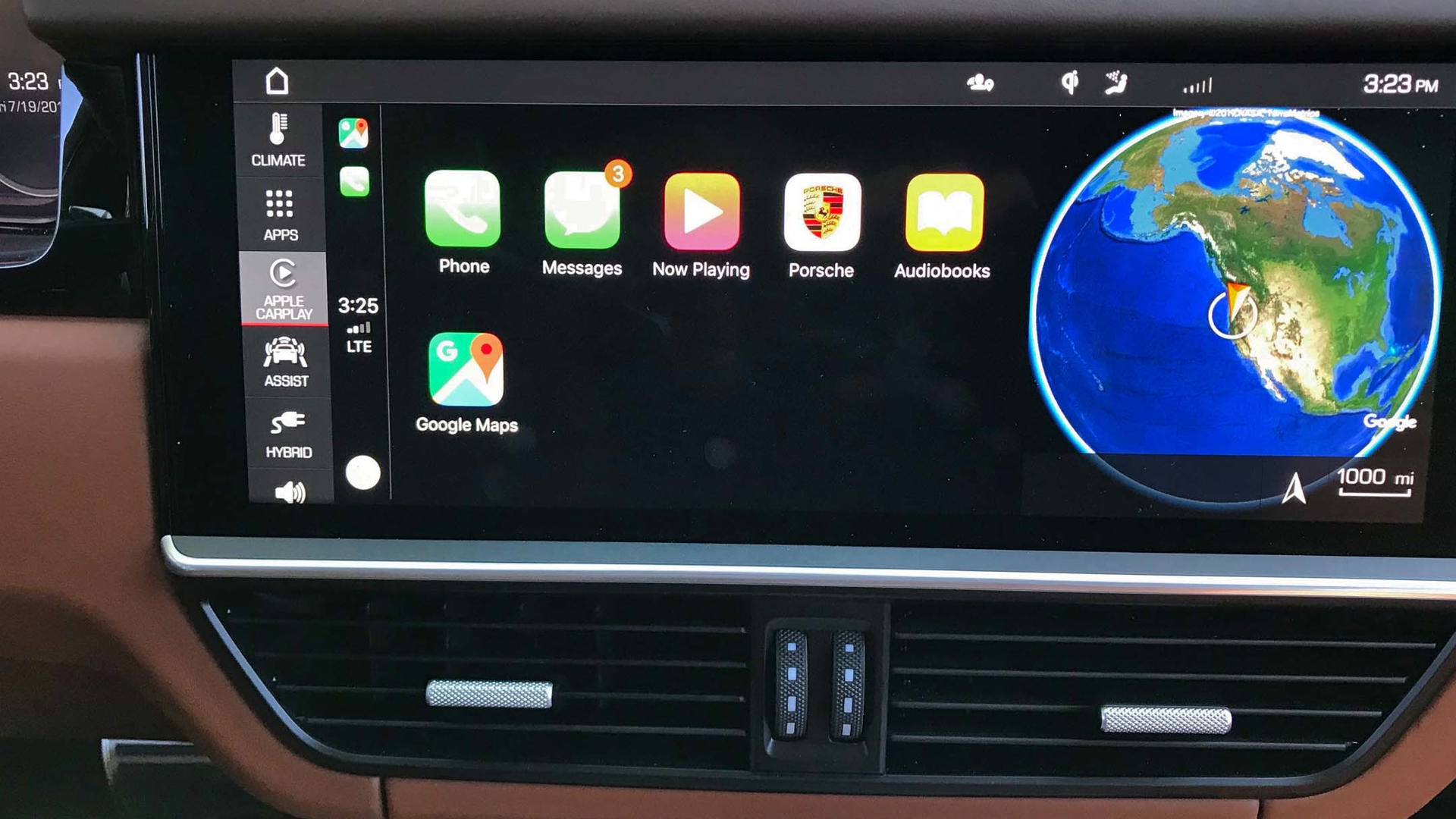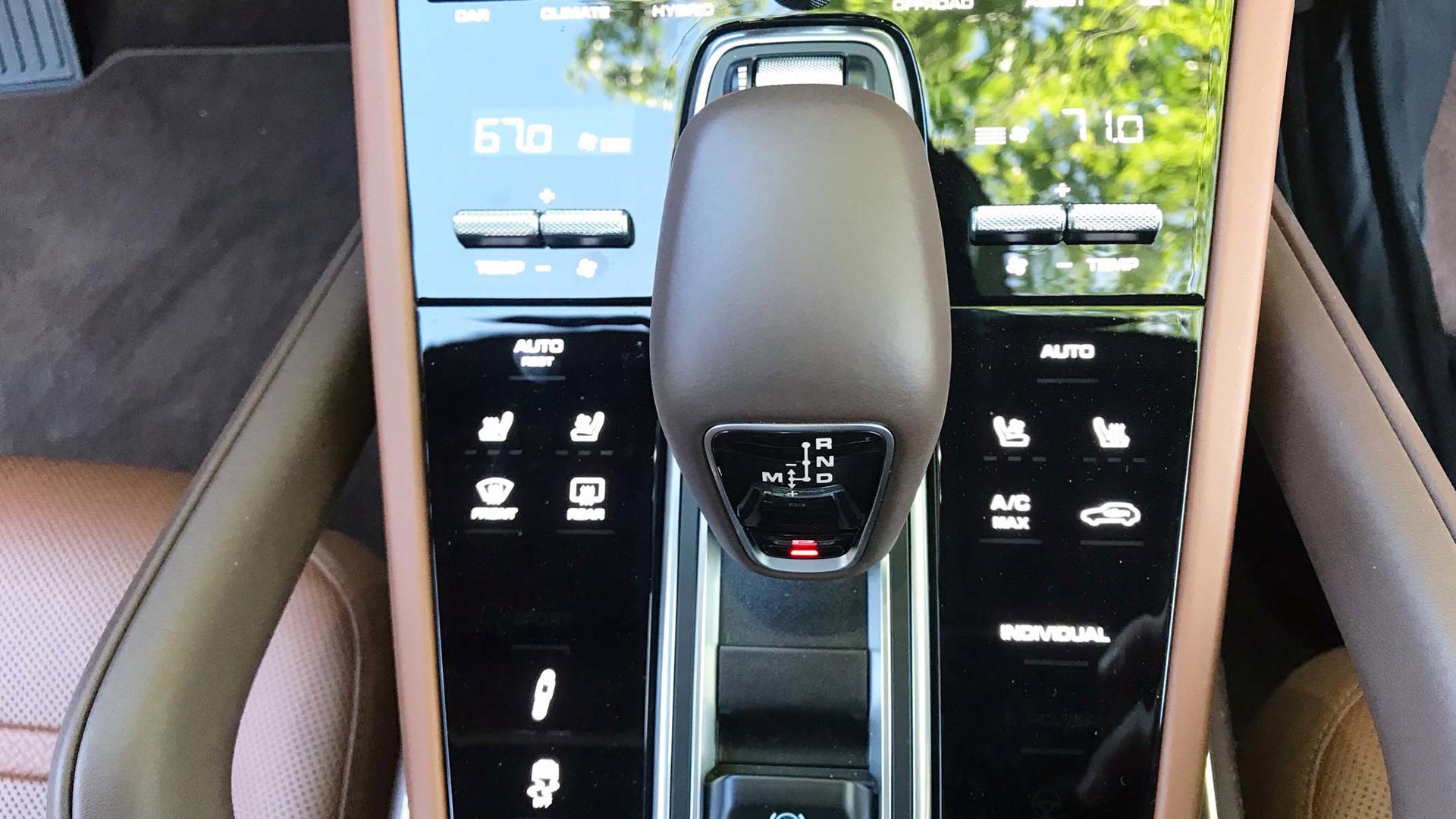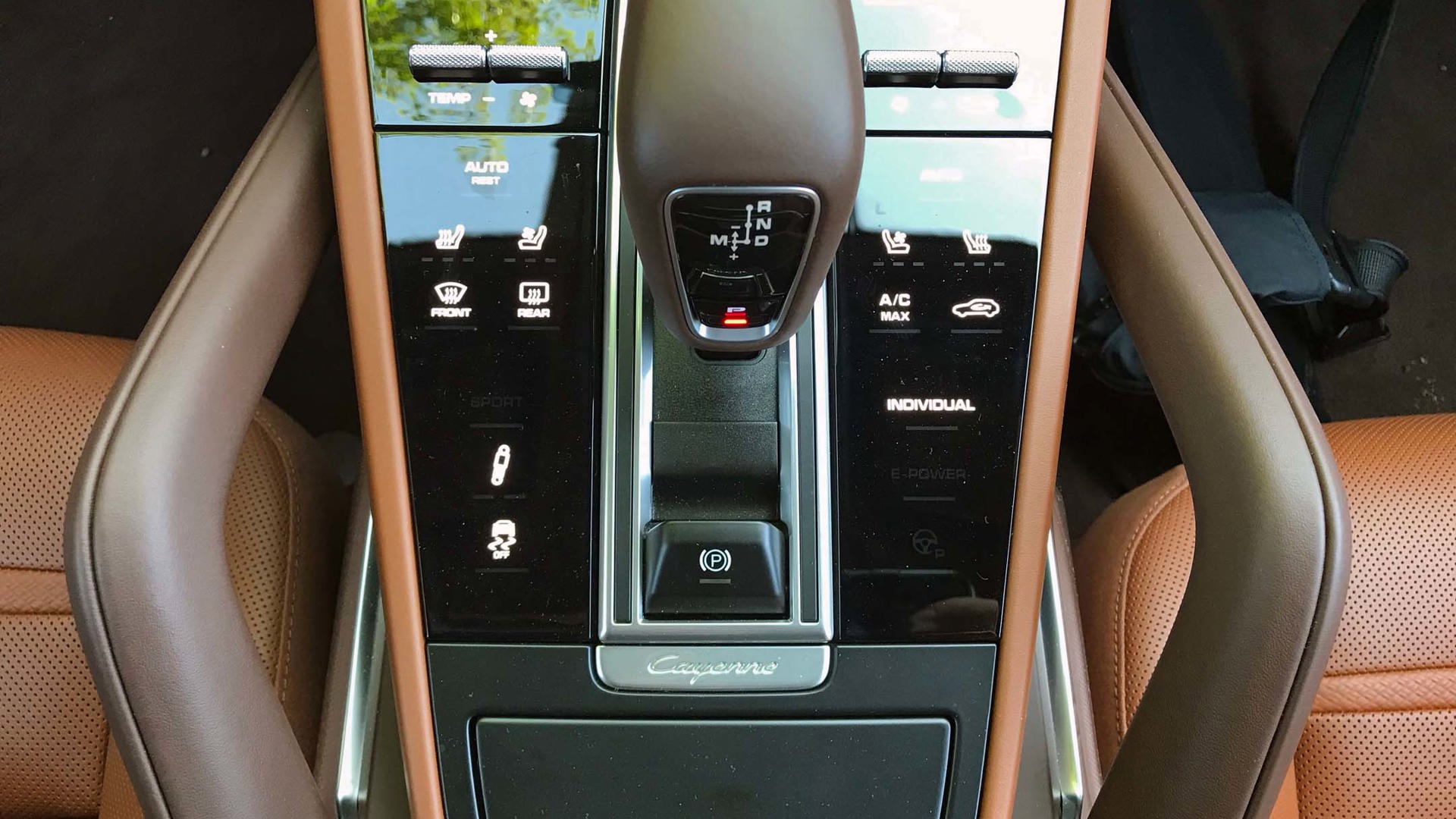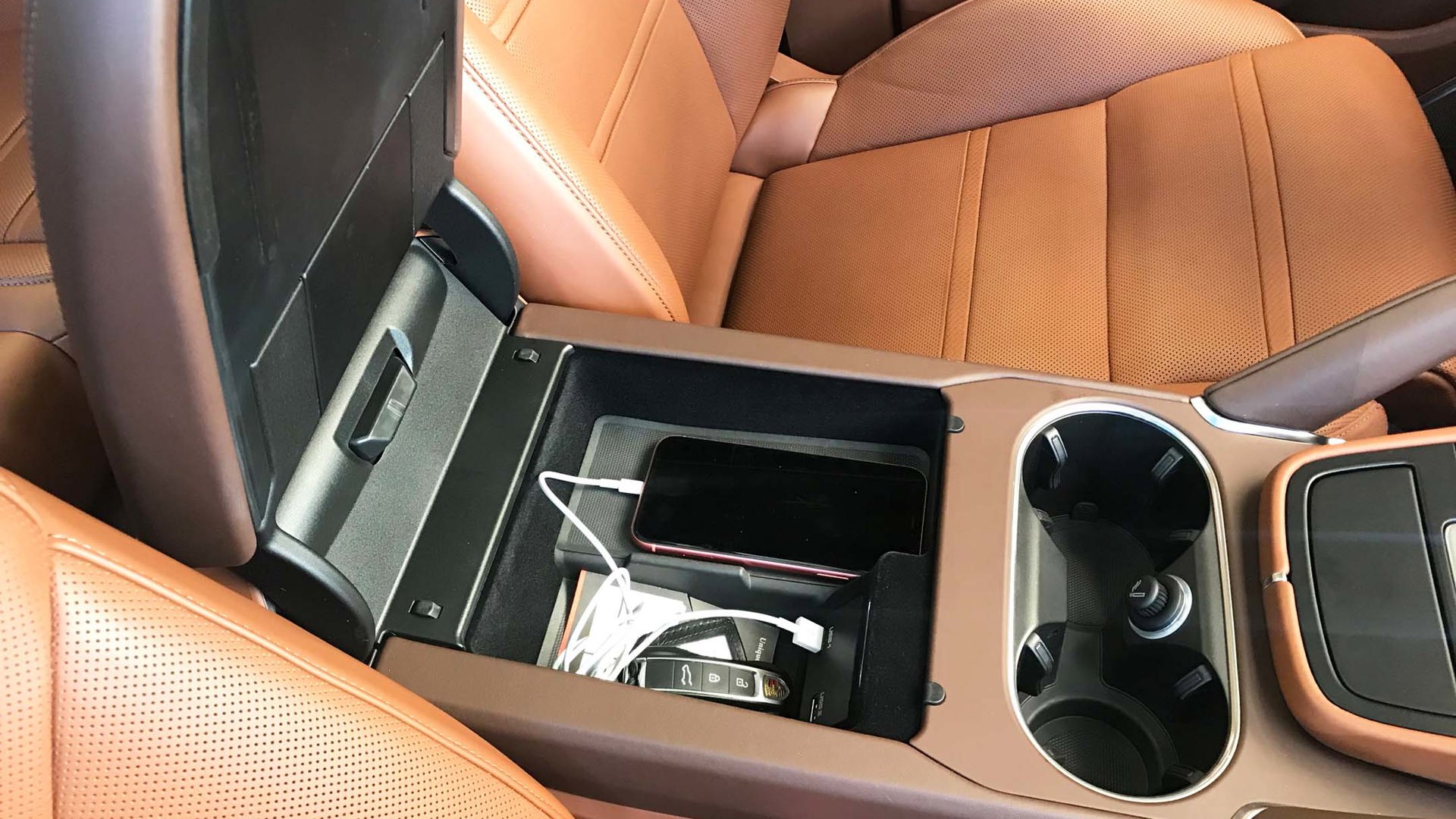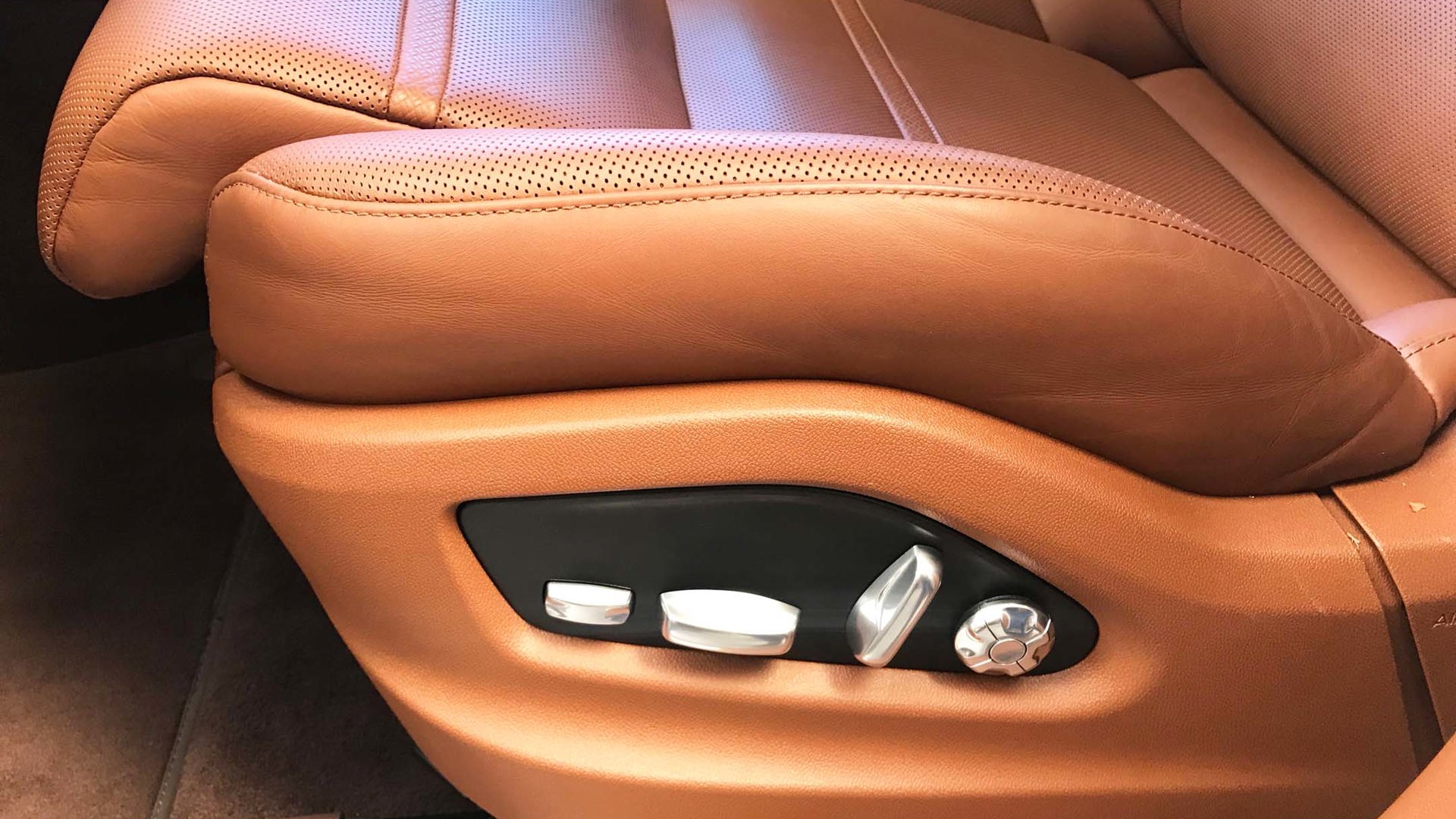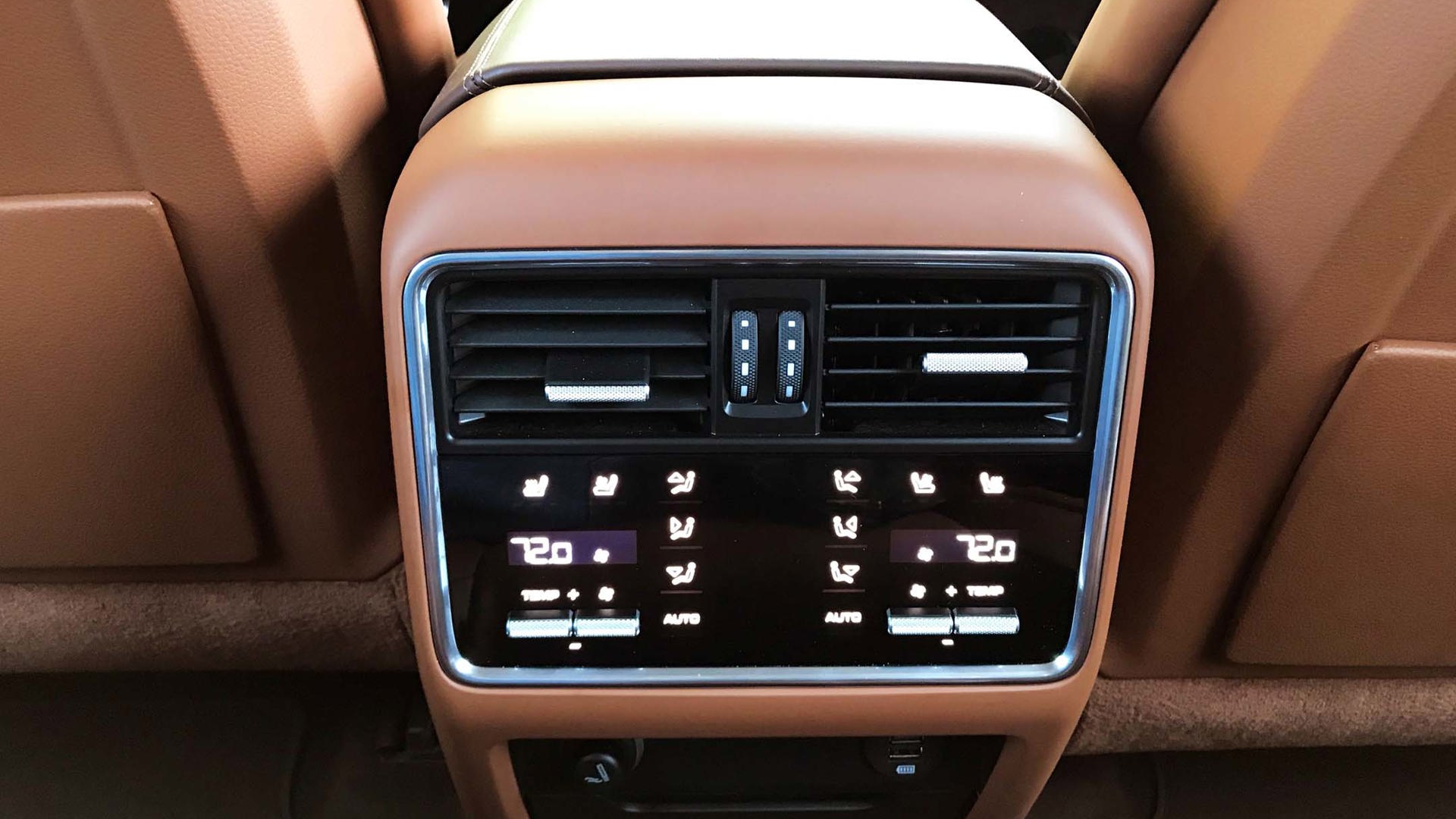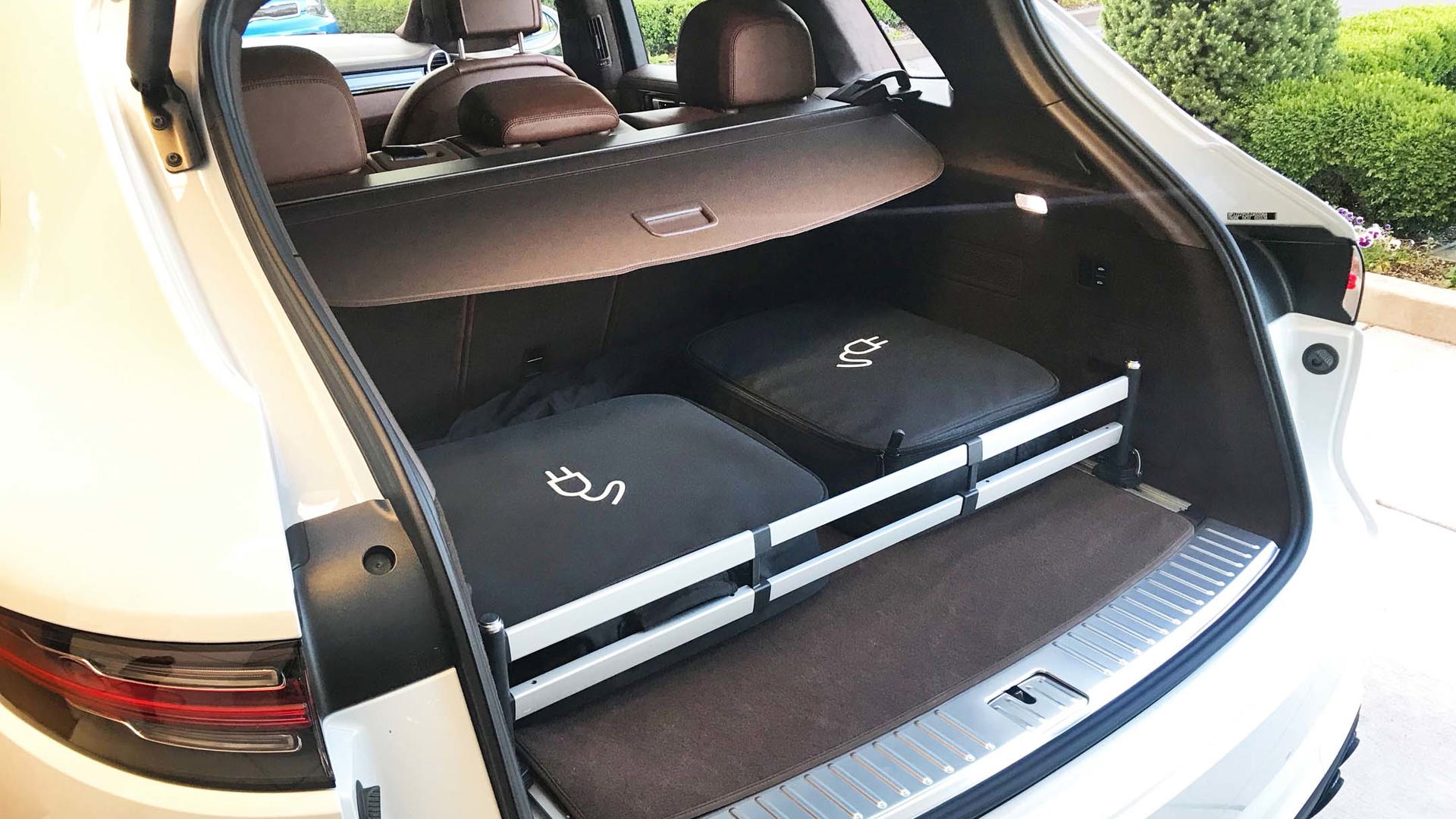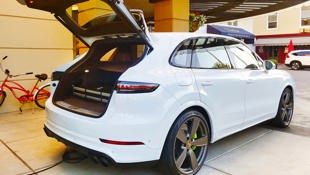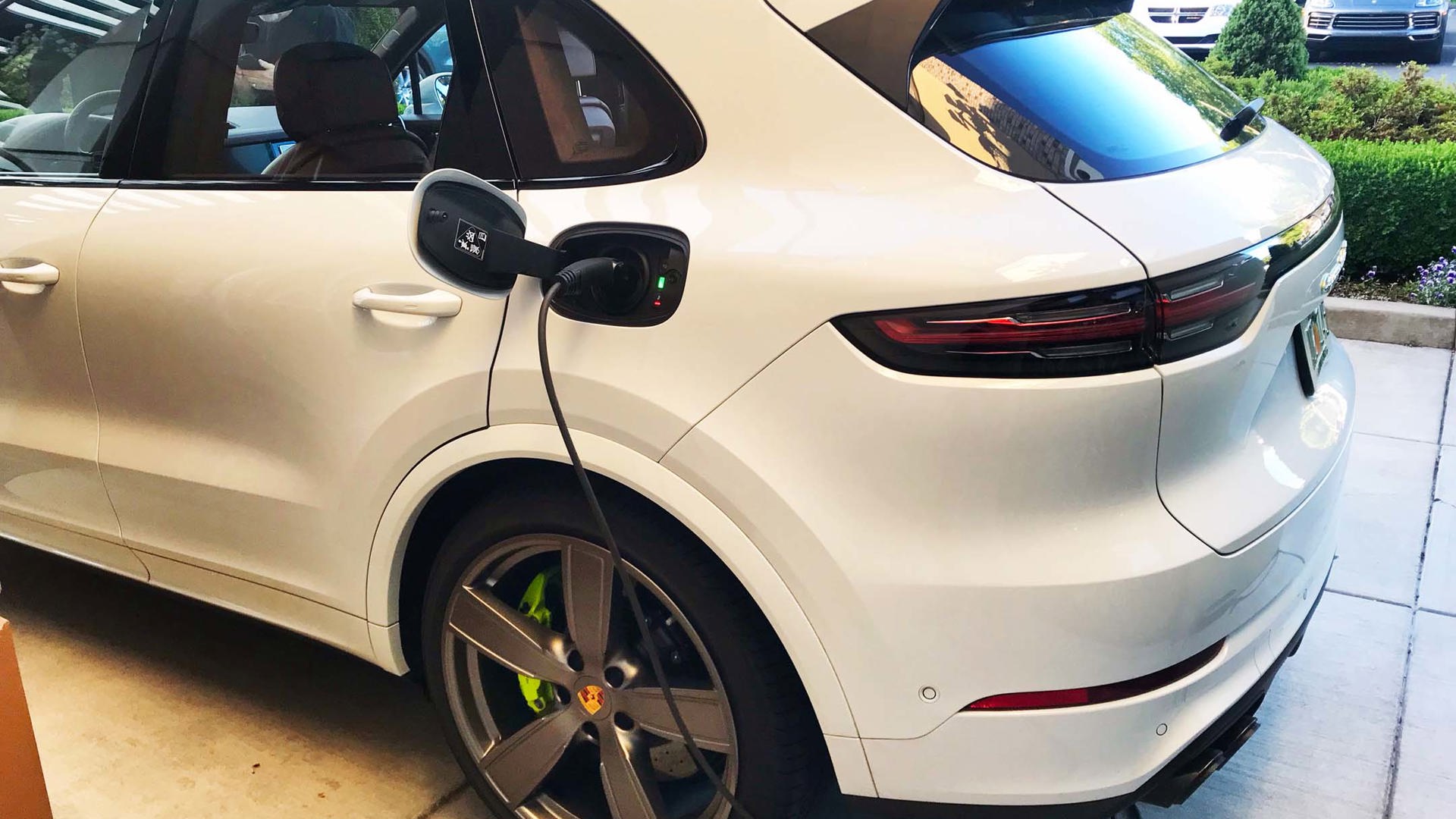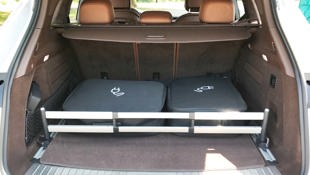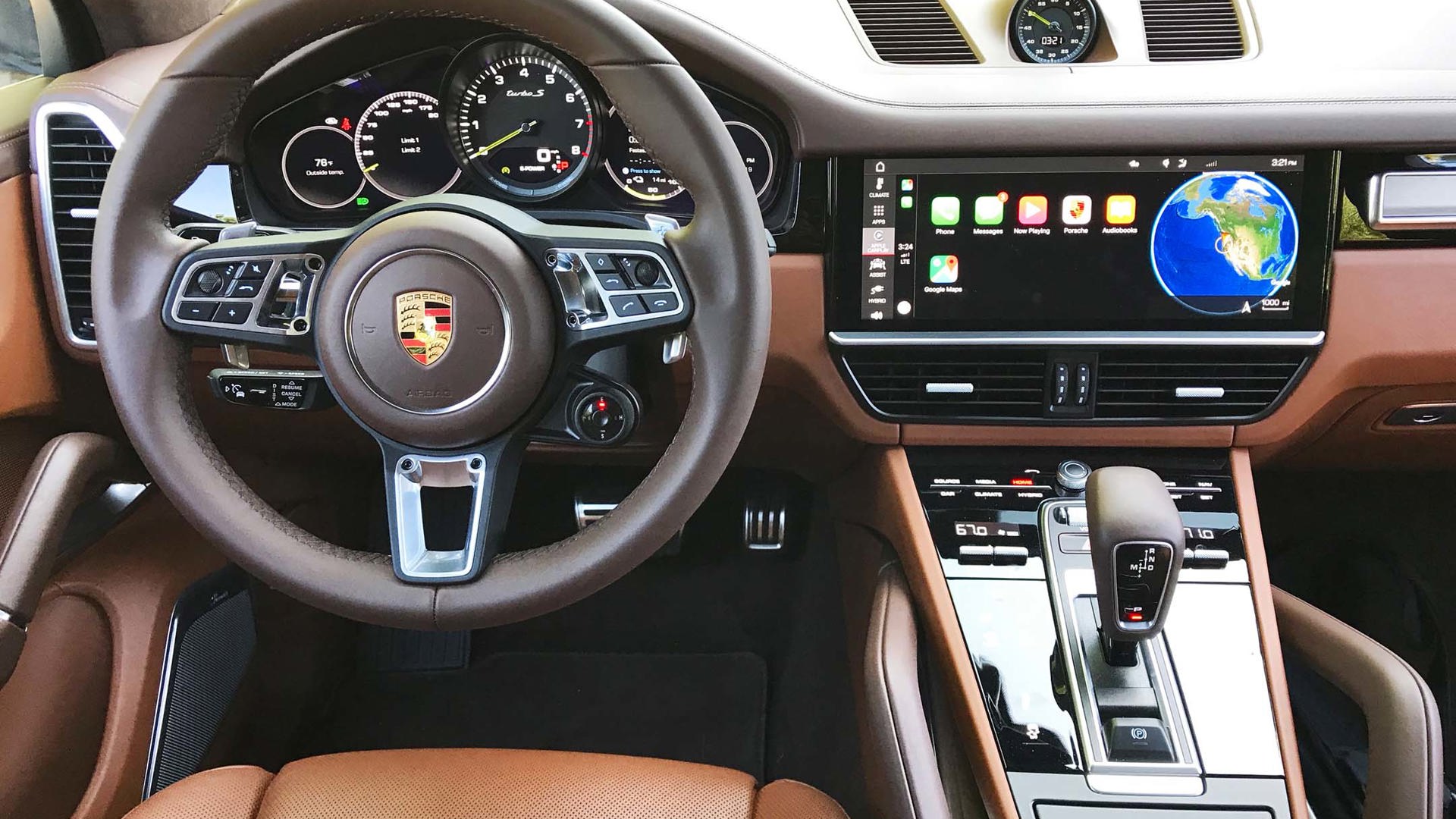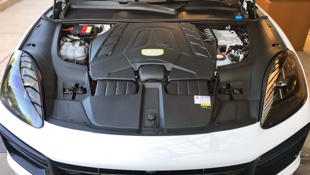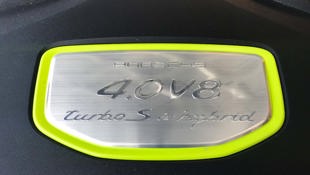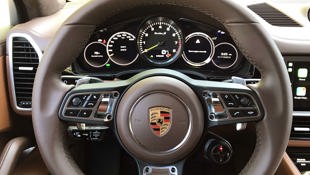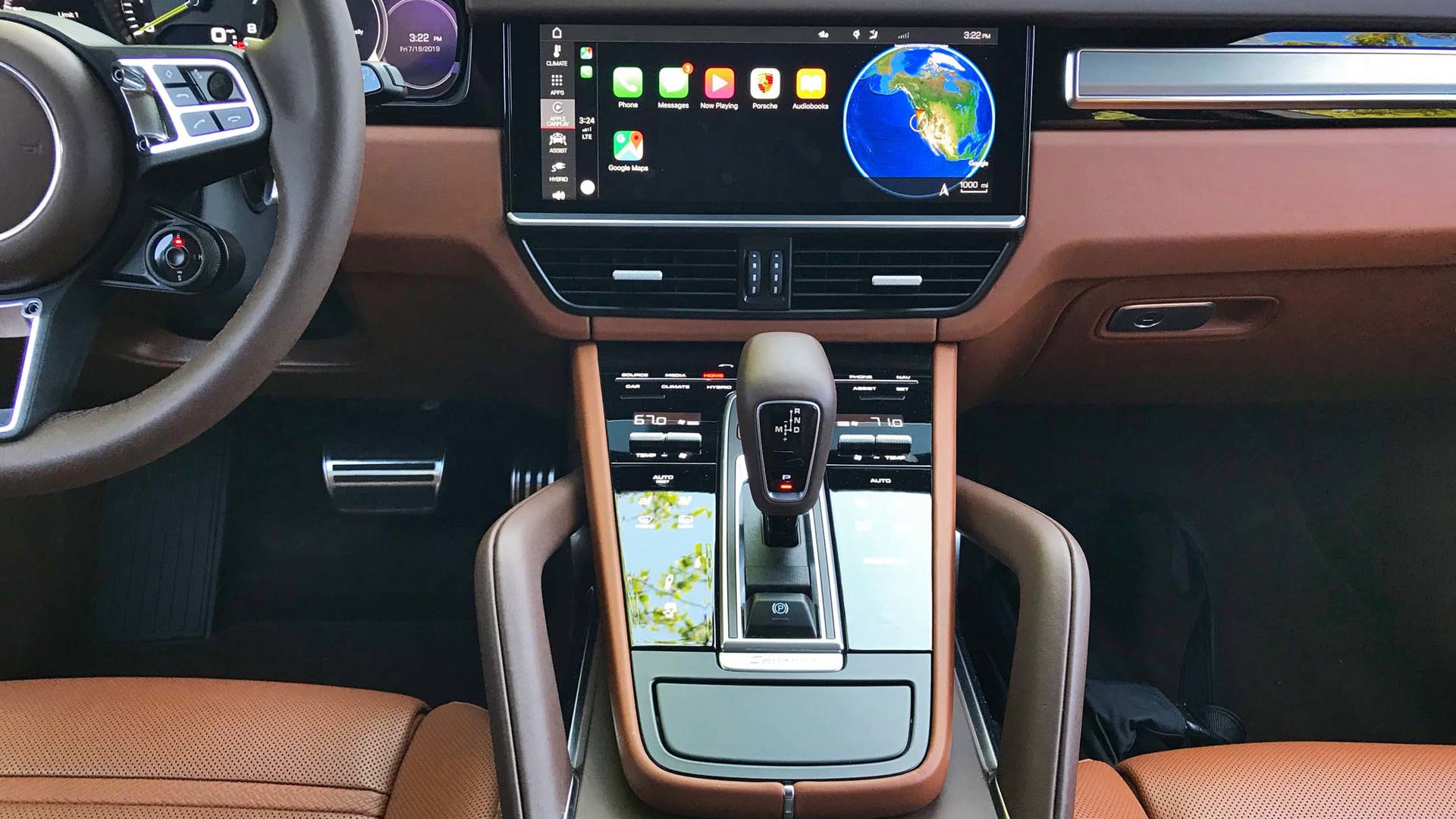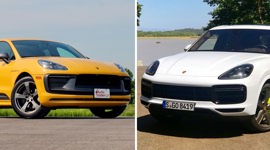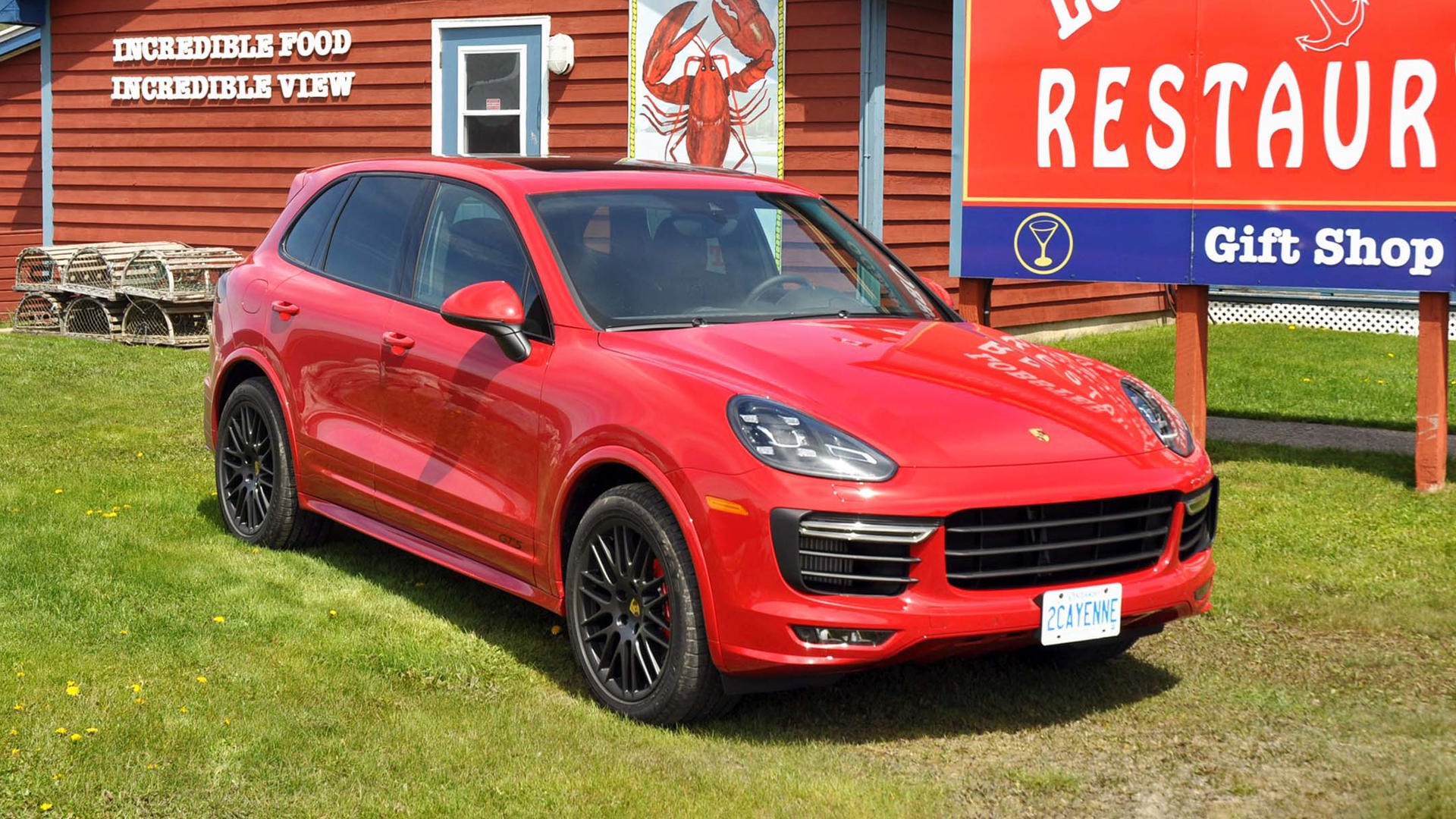 AutoTrader SCORE
AutoTrader SCORE
-
STYLING8/10
-
Safety9/10
-
PRACTICALITY8/10
-
USER-FRIENDLINESS7/10
-
FEATURES9/10
-
POWER9/10
-
COMFORT7/10
-
DRIVING FEEL8/10
-
FUEL ECONOMY9/10
-
VALUE8/10
EUGENE, Oregon – The 2020 Porsche Cayenne Turbo S E-Hybrid is further proof that electrification is a key part of Porsche’s vehicle performance strategy going forwards. The new Cayenne Turbo S E-Hybrid plug-in hybrid will be the most powerful and fastest Cayenne model in Porsche’s line-up when it goes on sale in the first quarter of next year. To be offered in both four-door SUV and four-door SUV “Coupe” body styles, the range-topping Cayenne Turbo S E-Hybrid will be priced at $182,200 and $187,100 respectively.
Porsche invited a few Canadian auto writers to an advance test drive of an early production model. Here are our first impressions.
Styling: 8/10
Based on the new third-generation Cayenne, the Cayenne Turbo S E-Hybrid looks almost the same as the current Cayenne Turbo but can be distinguished by its lime-green brake calipers and green-tinted “e-hybrid” exterior badges. Though it’s a tall and purposeful SUV, the Cayenne Turbo S E-Hybrid offers simple, fluid lines with a horizontal theme and pleasing proportions that minimize its heftiness. To save weight, the hood, front fenders, doors, side panels, roof, and rear liftgate are all made of aluminum as are many parts of the suspension. The Coupe body style offers a sleeker and sportier profile with a lower roofline and an integral roof spoiler; but with less luggage and interior space, it’s not quite as practical.
Safety: 9/10
As you might expect for close to $200,000, the Cayenne Turbo S E-Hybrid’s comes with a lengthy list of active and passive safety features as standard equipment. Key features include bright LED headlights that automatically adjust for speed, range, and weather conditions and swivel when turning; adaptive cruise control with stop-and-go function that can automatically brake and resume speed; automatic braking for pedestrians and cyclists; a head-up display in the windscreen that’s customizable; and front and rear park assist and rear camera with optional birds-eye view to make parking easier. Safety options include lane-keeping assist at speeds ranging from 65 to 250 km/h, Night Vision Assist with thermal imaging camera; and even brighter LED headlights. All of this is in addition to the Cayenne’s standard all-wheel drive that can send power to individual wheels, an air suspension with six different ride heights, powerful ceramic composite brakes, and optional rear wheel steering for tighter turns and increased stability.
Practicality: 8/10
The impressive performance of the Cayenne Turbo S E-Hybrid’s tends to overshadow the fact this is a very practical four-door family vehicle capable of on- or off-road performance. Its tall roof and wide body provide room for five along with a decent-sized cargo area accessed by a rear power liftgate. Cargo volume behind the rear seats is 645 litres rising to 1,605 litres with the 40/20/40-split rear seatbacks folded down. The sloping roofline of the Turbo S E-Hybrid Coupe reduces cargo room to 500 and 1,440 litres respectively. Due to the battery location under the rear floor, the E-Hybrid has slightly less cargo space than non-hybrid Cayenne models.
Thanks to its adjustable air suspension, the Cayenne Turbo S E-Hybrid automatically lowers when parked to make the step-in height lower; and it can drop even lower when loading cargo. Versatility is this vehicle’s strong point: for around-town use the driver can select fuel-saving hybrid or electric drive modes and a softer suspension setting; and for increased performance, the driver can choose maximum power and stiffer suspension settings.
User Friendliness: 7/10
For the most part, the Cayenne’s instruments and controls are easy to see and use. The bright digital instruments behind the steering wheel and the extra-large 12-inch centre touchscreen are easy to read, and controls are within easy reach. A small round dial on the steering wheel (part of the standard Sport Chrono Package) makes it convenient to switch between Hybrid, Electric, and Sport modes while on the fly. However, operating the functions in the centre screen requires some concentration which can be distracting. As well, the touch-sensitive buttons located on the glassy, near-horizontal surface of the centre console can be difficult to see when obscured by glare.
Comfort: 7/10
The driving position feels quite high with excellent outward visibility. Multi-adjustable power front seats are supportive and comfortable and the fat leather-trimmed tilt/telescopic steering feels meaty in your hands.
The Cayenne Turbo S E-Hybrid’s tall roof and wide body provides plenty of headroom and legroom for front passengers but we found the wide centre console to be a bit intrusive. At the rear, headroom is plentiful but legroom is only adequate, not generous. However, the standard 40/20/40-split rear bench seats can be moved fore and aft to increase legroom and the rear seatbacks also recline for more comfort. Front and rear heated seats are standard.
Features: 9/10
As the top-of-the-line Cayenne model, pretty much everything is standard: leather upholstery; 18-way front sport seats with memory function; heated front and rear seats; 40/20/40 split folding rear seatbacks; heated steering wheel; two-zone climate control; parking sensors and reversing camera; Bose audio system and Sirius satellite radio; Bluetooth; USB and aux outlets; navigation system and Apple CarPlay (but not Android Auto); Porsche Connect app for your phone to remotely monitor battery charge and program heating and air conditioning when the ignition is off; LED headlights and taillights; power liftgate; rain-sensitive front wipers and a rear wiper; 21-inch alloy wheels; and composite ceramic brakes.
There will be some options such as 22-inch wheels and tires, four-wheel steering, Sport Exhaust, massage seats and carbon roof on the Coupe.
Power: 9/10
Like the 2019 Cayenne E-Hybrid model introduced earlier this year, the 2020 Cayenne Turbo S E-Hybrid uses hybrid technology first developed for the Porsche 918 Spyder: a parallel hybrid powertrain positions the electric motor between the engine and eight-speed Tiptronic S manumatic transmission. But while the standard Cayenne E-Hybrid combines a 335 hp turbocharged 3.0-litre V6 with a 134 hp electric motor, the new Cayenne Turbo S E-Hybrid mates a 541 hp twin-turbocharged 4.0-litre V8 with a 134 hp electric motor for a total of 670 horsepower and 663 lb-ft torque – enough to rocket this hefty SUV from zero to 100 km/h in just 3.8 seconds – slightly quicker than the previous Cayenne hot-shoe, the non-hybrid Cayenne Turbo.
The beauty of this hybrid powertrain is that it provides the driver the option of all-out performance, fuel-saving hybrid operation, or electric-only drive simply by turning a dial integrated into the steering wheel. The standard Sport Chrono package allows the driver to choose between Sport and Sport+ for additional performance as well as Hybrid Auto which uses both engine and electric motor for best efficiency; E-Power for up to 44 kilometres of electric-only power; E-Hold which conserves battery charge for later use; and E-Charge that uses the engine only to power the vehicle and recharge the battery. In Sport mode, the engine charges the battery to a minimum level while in Sport+ mode the engine charges the battery as quickly as possible for maximum performance.
The E-Hybrid powertrain system includes a 7.2-kW onboard charger and a high-voltage liquid-cooled 14.1-kWh lithium-ion battery under the rear cargo floor that can be charged in about six hours with a 240-volt charger and in about 2.4 hours with a 400-volt fast charger. Also standard are an eight-speed Tiptronic S transmission with automatic stop/start; active all-wheel drive; adaptive air suspension with Porsche Active Suspension Management; 21-inch alloy wheels and tires; four-wheel ceramic composite disc brakes; and automatic rear spoiler.
Driving Feel: 8/10
When the twin-turbocharged V8 and electric motor are working together in Sport and Sport+ mode, acceleration is blindingly quick but there’s little wheelspin thanks to active all-wheel drive and standard traction control nannies. In Sport and Sport+ mode, throttle response is more immediate, transmission shifts are faster, steering is sharper, and the ride is stiffer; but no matter what drive mode you’re in, the ride always feels well damped and cornering is extremely stable in high-speed bends due to the standard PASM active damping system and PDCC active roll stabilization. At freeway speeds the body automatically lowers for improved aerodynamics; and for off-road use the suspension can be raised. Steering is precise and braking feel is firm and powerful. Still, this ain’t no 911: the Cayenne’s tall body can’t help but lean a bit in tight corners.
You can drive silently on battery power alone in E Mode up to 75 km/h up to 44 kilometres at which time the engine kicks back in with little fuss to recharge the battery. For short trips to the grocery store, E Mode is perfect. But for typical everyday use, the best driving mode is Hybrid Auto which uses a combination of engine and electric power to provide good performance and fuel economy while keeping the battery charged.
The optional four-wheel steering system steers the rear wheels slightly in the opposite direction to the front wheels at slow speeds and in the same direction at high speeds. The result is a tighter turning radius at low speeds, great for parallel parking and U-turns, and quicker turns and enhanced stability at higher speeds. However, not everyone will like the sharpness of the steering at higher speeds because it feels somewhat unusual.
Fuel Economy: 8.5/10
Official fuel consumption figures weren’t available at press time but you can expect the Turbo S E-Hybrid’s fuel consumption to be slightly thirstier than the 2019 Cayenne E-Hybrid (4.9/5.1/5.0 L/100 km city / highway / combined). However, this figure is somewhat misleading as fuel consumption varies considerably depending on which drive mode is chosen (Hybrid Auto, Sport, Sport+, E-Power, and E-Charge).
Value: 8/10
Even though the Porsche Cayenne Turbo S E-Hybrid costs almost $200,000, it is arguably a good value. Basically, there aren’t any other plug-in hybrids or even non-hybrids that come close to the Cayenne Turbo S E-Hybrid’s combination of power, fuel economy, and price. The 650 hp Lamborghini Urus ($232,000) and 600 hp W12 Bentley Bentayga ($242,000) compete on power but can’t match its fuel economy or its price. The 2020 Cayenne Turbo S E-Hybrid is really in a class of its own, at least for the present.
Conclusion
The 2020 Porsche Cayenne Turbo S E-Hybrid may be the most versatile vehicle ever made: a family vehicle, a performance vehicle, a utility vehicle, a luxury vehicle, an off-road vehicle, a hybrid, and an electric vehicle all in one! Few people will be able to afford its six-figure price tag, however, and shoppers may consider the standard Cayenne E-Hybrid which has many of the same benefits for about half the price.
| Engine Displacement | 4.0L |
|---|---|
| Engine Cylinders | V8 |
| Peak Horsepower | 670 hp (combined) |
| Peak Torque | 663 lb-ft (combined) |
| Fuel Economy | n/a |
| Cargo Space | 645 / 1,605 L seats down |
| Model Tested | 2020 Porsche Cayenne Turbo S E-Hybrid |
| Base Price | $182,200 |
| A/C Tax | $100 |
| Destination Fee | n/a |
| Price as Tested | n/a |
|
Optional Equipment
n/a
|
|
